Find Boating Courses
Advertise boating courses.
- Croatia No Longer The Number One Sailing Destination In Europe!
- Why You Should Learn To Sail A Trimaran
- Meteorology Courses – Why Learn This Core Sailing Skill?
- Solo Circumnavigation – How To Master The Art Of Sailing Alone
- How Powerboat Courses Can Improve Your Docking Skills
- December 2016
- November 2016
- October 2016
- September 2016
- August 2016
- February 2016
- January 2016
- December 2015
- November 2015
- October 2015
- September 2015
- August 2015
- February 2015
- January 2015
- December 2014
- November 2014
- October 2014
- September 2014
- August 2014
- February 2014
- January 2014
- December 2013
- November 2013
- October 2013
- September 2013
- August 2013
- February 2013
- January 2013
- December 2012
- November 2012
- October 2012
- September 2012
- boat handling
- Boat maintenance
- Buying A Boat
- Competent Crew
- Competition
- Competitions
- Day Skipper
- Dinghy Sailing
- Disabled Sailing
- Mile Building
- Paralympic Sailing
- Passage Planning
- Powerboat Courses
- Sail Maintenance
- Sailing Courses
- Sailing Experience Courses
- Sailing Regulations
- Sailing Tips
- Sailing Training Courses
- Solo Circumnavigation
- Southampton
- Uncategorized
- Yacht Racing

A Beginner’s Guide to Motorboating
Motorboats are an exciting class of vessel that offer you the chance to quickly get yourself out on the water and skimming the open waves.
Types of Motorboats
The term ‘motorboat’ is something of a catch-all. Since it just refers to any boat with a motor, we need to break the category down a little further.
A speedboat is a kind of motorboat specifically designed for – you guessed it – speed. They are as streamlined as possible, with deep v-shaped hulls to powerfully cut through the waves at pace.
Larger motor cruisers are built for leisure, and can drastically vary in size. Some are kitted out for day trips, and others are full holiday cruisers with sleeping accommodation and kitchen and bathroom facilities.
Finally, any boat with a motor attached classifies as a motorboat – that includes sailboats and dinghies fitted with an outboard motor.
How Does The Engine Work?
The engine is an ‘internal combustion’ engine, just like a car’s. However, instead of rotating an axel, the engine on a motorboat drives a propeller in the water, or sometimes a jet pump. Each of these creates a strong force against the water which accelerates the boat forward.
An inboard motor is an engine that’s built-in and enclosed by the hull of the boat. In contrast, an outboard motor is a self-contained engine that is usually mounted to the back of the boat. Outboard motors can be attached to dinghies and rowing boats, transforming them into motorboats.
Care and Maintenance Of Your Motorboat
A motorboat is obviously a completely different animal to a sailboat when it comes to maintenance and repairs, for one main reason – it has an engine.
For any given motorboat, there are a few simple engine procedures and checks that need to be done every time before hitting the open waters. The procedures vary according to the type of engine, and there are specialised maintenance courses available for different engine types. Refuelling and repairs are often also covered.
Piloting a Motorboat
Piloting a motorboat is, as you’d expect, something of a specific skillset.
In many ways, it’s easier than sailing – your source of power is onboard, and there’s no need to catch the perfect wind or run around pulling ropes and ducking under the boom with the athleticism of a gymnast. You just turn power on and point the boat where you want to go, right?
That’s the essence of it, but as you’d expect, there are a few nuances. The controls are generally quite simple, consisting of not much more than throttle and steering wheel, but the movement dynamics take some getting used to. Boats aren’t like cars, because the “surface” on which they travel – water – is itself in constant flux.
One important thing to remember is that if you’re travelling parallel to waves, either natural or those caused by another boat, you’re going to be rocking from side to side quite powerfully. Aim to cut across waves at at least 45 degrees for a smoother ride.
It’s also important to know the local laws pertaining to boating , such as the minimum distance between boats, maximum speeds and other general rules – and be aware that these may also change from area to area.
A good introductory motorboating course will give you the skills you need to competently pilot a powered vessel, alongside teaching you essential maintenance, repair skills and local boating laws. Our job at The Boating Hub is to connect you to wide range of motorboat courses in the UK and further afield – and we’re confident you’ll find a course that meets your needs.
Become our Friends!
Get our newsletter.
State Boating Laws, Rules & Requirements
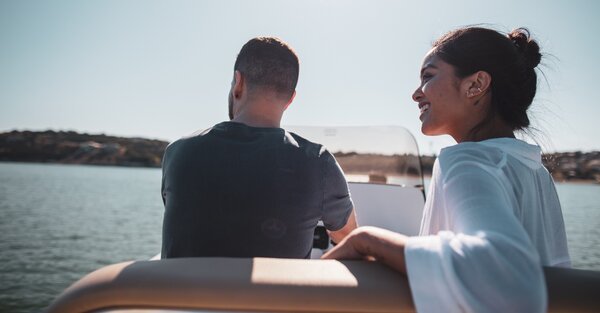
Find Boating Resources in Your State
Boating rules, laws and regulations vary from state to state. Use our interactive map to find everything you need to know about boating safety, life jacket requirements, minimum age necessary to operate a boat or personal watercraft (PWC) , trailer registration requirements , and other educational resources. Just click on your state to get started.
Also be sure to use the Color-Coded Key below to understand boating license and safety certificate requirements for your state.

Last Updated: July 8, 2021
Go Boating Today
Ready to get underway? Boating is more accessible than you may think. There are lots of easy ways to get on the water close to home—rentals, boat clubs and peer-to-peer sharing options.
Find Your Dream Boat
Want to own your own boat? Find a boat that matches your budget and lifestyle with our Boat Finder tool, and use our Boat Loan Calculator to get the lowdown on costs.
State-by-State Boating Rules and Regulations
*To make updates on your state's information, state officials should contact Emma Boone , Director, NMMA Digital Communications.
- Resident License and/or Education Requirement: Must-have boating license.
- Life Jacket Requirements: 8 and under must wear a PFD.
- Minimum Age to Operate a Vessel: 12 years old or older to operate any type vessel. 12 and 13 years olds must have someone 21 years old or older, who is a licensed operator, on board and within reach of the controls. 14 years old or older to operate alone.
- Minimum Age to Operate a Personal Watercraft (PWC): 12 years old or older to operate any type vessel. 12 and 13 years olds must have someone 21 years old or older, who is a licensed operator, on board and within reach of the controls. 14 years old or older to operate alone.
- Boat Trailer Registration Requirements: Boat trailers are not registered in Alabama.
For more information about detailed boating rules, regulations, and laws in Alabama, visit the Alabama Law Enforcement Agency .
- Resident License and/or Education Requirement: No mandatory boat or water safety course educational requirements.
- Life Jacket Requirements: 13 and under must wear a PFD.
- Minimum Age to Operate a Vessel: No age requirement.
- Minimum Age to Operate a Personal Watercraft (PWC): No age requirement.
- Boat Trailer Registration Requirements: Boat trailers must be registered.
For more information about detailed boating rules, regulations, and laws in Alaska, visit the Alaska Department of Natural Resources, Office of Boating Safety .
- Life Jacket Requirements: 12 and under must wear a PFD.
- Minimum Age to Operate a Vessel: It is illegal for a person under the age of 12 to operate a vessel with a motor greater than 8 hp.
- Minimum Age to Operate a Personal Watercraft (PWC): Arizona law states that it is illegal for a person under the age of 12 to operate a vessel with a motor greater than 8 hp.
- Boat Trailer Registration Requirements: Non-commercial trailers with a declared gross vehicle weight (GVW) of 10,000 lbs or less.
For more information about detailed boating rules, regulations, and laws in Arizona, visit Arizona Game & Fish .
- Resident License and/or Education Requirement: Mandatory boating safety education law that applies to some operators of boats and/or personal watercraft.
- Minimum Age to Operate a Vessel: To operate a motorboat powered by 10hp or more: A person under 12 must have a Boat Ed (BE) certification and be under direct visible and audible supervision of a parent, guardian or person over 17 years.
- Minimum Age to Operate a Personal Watercraft (PWC): 14 years or older to operate by themselves as long as they are Boat Ed certified. Persons 12 or 13 years must have BE and have a person at least 18years on board. Under 12 must have BE and have a person at least 21years on board and in a position to take immediate control of the PWC.
- Boat Trailer Registration Requirements: All boat trailers and travel trailers drawn by any truck.
For more information about detailed boating rules, regulations, and laws in Arkansas, visit the Arkansas Game & Fish Commission .
- Resident License and/or Education Requirement: California Vessel Operator Card (CVOC) required to operate a vessel.
- Minimum Age to Operate a Vessel: Must be 16 or older to operate a motorboat of 15 hp or greater if unsupervised. Those 12-15 years of age may operate under supervision of a person 18 or older who is on board.
- Minimum Age to Operate a Personal Watercraft (PWC): Must be 16 or older to operate a motorboat of 15 hp or greater if unsupervised. Those 12-15 years of age may operate under supervision of a person 18 or older who is on board.
- Boat Trailer Registration Requirements: Those with boats and trailers are encouraged to call the California DMV to determine if registration is needed.
For more information about detailed boating rules, regulations, and laws in California, visit the California Department of Parks & Recreation .
- Resident License and/or Education Requirement: Mandatory boating education law that applies to some operators of boats and/or personal watercraft.
- Minimum Age to Operate a Vessel: A person 14 years of age or older, who is less than 16 years of age, may operate a motorboat only if he or she completes a boating safety course.
- Minimum Age to Operate a Personal Watercraft (PWC): A person 14 years of age or older, who is less than 16 years of age, may operate a motorboat only if he or she completes a boating safety course.
- Boat Trailer Registration Requirements: Boat trailers must be titled and registered.
For more information about detailed boating rules, regulations, and laws in Colorado, visit Colorado Parks & Wildlife .
Connecticut
- Resident License and/or Education Requirement: Persons must obtain a 'Safe Boating Certificate' or a 'Certificate of Personal Watercraft Operation'.
- Minimum Age to Operate a Vessel: 12 years old can operate up to 10 hp alone
- Minimum Age to Operate a Personal Watercraft (PWC): 16 years of age.
For more information about detailed boating rules, regulations, and laws in Connecticut, visit the Connecticut Department of Energy & Environment Protection .
- Resident License and/or Education Requirement: Mandatory boat education law that applies to some operators of boats and/or personal watercraft.
- Minimum Age to Operate a Personal Watercraft (PWC): 14 to 16 with adult on board with boating class, 16 with a boating class.
For more information about detailed boating rules, regulations, and laws in Delaware, visit the Delaware Department of Natural Resources & Environmental Control .
- Resident License and/or Education Requirement: All Florida residents born after January 1, 1988 who operate powered watercraft 10 hp or greater must carry a Florida Boating Safety Education Identification Card.
- Life Jacket Requirements: 6 and under must wear a PFD.
- Minimum Age to Operate a Personal Watercraft (PWC): Operators of personal watercraft must be at least 14 years of age.
For more information about detailed boating rules, regulations, and laws in Florida, visit the Florida Fish & Wildlife Conservation Commission .
- Resident License and/or Education Requirement: All operators born after January 1, 1998 must have passed a boater education course approved by the Department of Natural Resources and have card on board to operate any vessel.
- Minimum Age to Operate a Vessel: 12 years of age.
- Minimum Age to Operate a Personal Watercraft (PWC): 12 years of age.
For more information about detailed boating rules, regulations, and laws in Georgia, visit the Georgia Department of Natural Resources .
- Resident License and/or Education Requirement: All individuals who operate a motorized vessel, greater than 10 hp must have taken a boating safety course and show proof of certification.
- Minimum Age to Operate a Personal Watercraft (PWC): 15 years of age.
For more information about detailed boating rules, regulations, and laws in Hawaii, visit the Department of Land & Natural Resources, Division of Boating & Ocean Recreation .
- Resident License and/or Education Requirement: No mandatory boater safety class educational requirements. However, state has boating law that applies to some operators of boats and/or personal watercraft.
- Life Jacket Requirements: 14 and under must wear a PFD.
For more information about detailed boating rules, regulations, and laws in Idaho, visit the Idaho Department of Parks & Recreation .
- Resident License and/or Education Requirement: Valid Boating Safety Certificate issued by the Department of Natural Resources or an entity or organization recognized and approved by the Department is required.
For more information about detailed boating rules, regulations, and laws in Illinois, visit the Illinois Department of Natural Resources .
- Minimum Age to Operate a Vessel: Operator must be 15 years old and meet ID and education requirements or 16 years old or older with a valid motor vehicle drivers license to operate a motorboat with a motor greater than 10 hp.
- Minimum Age to Operate a Personal Watercraft (PWC): Operator must be 15 years old and meet ID and education requirements or 16 years old or older with a valid motor vehicle drivers license to operate a motorboat with a motor greater than 10 hp.
For more information about detailed boating rules, regulations, and laws in Indiana, visit the Indiana Department of Natural Resources .
- Minimum Age to Operate a Vessel: Minimum age 12 to operate vessel over 10 hp.
- Minimum Age to Operate a Personal Watercraft (PWC): Those under age 12 must be accompanied by an adult.
For more information about detailed boating rules, regulations, and laws in Iowa, visit the Iowa Department of Natural Resources .
- Minimum Age to Operate a Vessel: 12 years of age for any vessel.
- Minimum Age to Operate a Personal Watercraft (PWC): 12 years of age for any vessel.
For more information about detailed boating rules, regulations, and laws in Kansas, visit Kansas Wildlife, Parks & Tourism .
- Minimum Age to Operate a Vessel: Must be 12 years or old to operate 10 hp or greater.
- Minimum Age to Operate a Personal Watercraft (PWC): 12 years of age.
- Boat Trailer Registration Requirements: Boat trailers must be titled, but not registered.
For more information about detailed boating rules, regulations, and laws in Kentucky, visit the Kentucky Department of Fish & Wildlife Resources .
- Resident License and/or Education Requirement: All persons born after January 1, 1984, must complete a boating education course and carry proof of completion to operate a motorboat in excess of 10 hp.
- Life Jacket Requirements: 16 and under must wear a PFD.
- Minimum Age to Operate a Personal Watercraft (PWC): 16 years with a boating certificate.
- Boat Trailer Registration Requirements: Boat trailers must be registered and plated.
For more information about detailed boating rules, regulations, and laws in Louisiana, visit the Louisiana Department of Wildlife & Fisheries .
- Resident License and/or Education Requirement: No mandatory boating education requirements.
- Life Jacket Requirements: 10 and under must wear a PFD.
- Minimum Age to Operate a Vessel: When operating a motorboat with more than 10 hp, a person under age 12 must be under immediate supervision of person in boat who is at least 16.
- Minimum Age to Operate a Personal Watercraft (PWC): A person under age 16 may not operate a PWC. A person between 16 & 18 years of age may operate a PWC if they have successfully completed an approved education course, or if they are accompanied by a person 18 years or older.
For more information about detailed boating rules, regulations, and laws in Maine, visit the Maine Department of Inland Fisheries & Wildlife .
- Minimum Age to Operate a Vessel: When operating a towing vessel (water skiing, etc.), the operator and observer must be at least 12 years of age.
For more information about detailed boating rules, regulations, and laws in Maryland, visit the Maryland Department of Natural Resources .
Massachusetts
- Resident License and/or Education Requirement: Operators required to have passed a state-approved boating education course must have the Boating Safety Certificate on board and available for inspection by an enforcement officer whenever the vessel is operated.
- Minimum Age to Operate a Vessel: 12 years of age with direct supervision from an adult 18 years of age.
- Boat Trailer Registration Requirements: Boat trailers must be registered and depending on the weight, may need to be titled.
For more information about detailed boating rules, regulations, and laws in Massachusetts, visit the Massachusetts Boating Law Summary .
- Resident License and/or Education Requirement: Those born on or after July 1, 1996, may operate a boat legally only if they have been issued a boating safety certificate and have it on board the boat. Those born before July 1, 1996, may operate a boat legally without restrictions.
- Minimum Age to Operate a Vessel: No age requirement.
- Minimum Age to Operate a Personal Watercraft (PWC): 14 years of age.
For more information about detailed boating rules, regulations, and laws in Michigan, visit the Michigan Department of Natural Resources .
- Minimum Age to Operate a Vessel: Must be at least 12 years of age to operate motors over 25 hp and must be certified.
- Minimum Age to Operate a Personal Watercraft (PWC): 13 years of age.
- Boat Trailer Registration Requirements: Trailers that have 3,000 lbs of gross vehicle weight or under must be registered.
For more information about detailed boating rules, regulations, and laws in Minnesota, visit the Minnesota Department of Natural Resources .
Mississippi
- Resident License and/or Education Requirement: Any person born after June 30, 1980 must complete a Boating Safety Course to operate a boat. Persons under 12 years of age must be accompanied by a person 21 or older on board the boat in order to operate the boat.
- Minimum Age to Operate a Vessel: At least 12 years of age and completed an approved boating safety course.
- Minimum Age to Operate a Personal Watercraft (PWC): At least 12 years of age and completed an approved boating safety course.
For more information about detailed boating rules, regulations, and laws in Mississippi, visit the Mississippi Department of Marine Resources .
- Resident License and/or Education Requirement: All persons born after January 1, 1984, who operate any vessel on the lakes of the State of Missouri must have on board a boating safety identification card issued by the Missouri State Highway Patrol (MSHP) and a photo I.D.
- Life Jacket Requirements: 7 and under must wear a PFD.
- Minimum Age to Operate a Personal Watercraft (PWC): 14 years of age unless under the direct, onboard supervision of a parent, guardian, or other person 16 years of age or older.
For more information about detailed boating rules, regulations, and laws in Missouri, visit the Missouri State Highway Patrol .
- Minimum Age to Operate a Vessel: For motorboats over 10 hp: 0-12 must be accompanied by and adult, 13-14 must have certificate or be accompanied by adult, 15+ no requirements.
- Minimum Age to Operate a Personal Watercraft (PWC): For PWC over 10 hp: 0-12 must be accompanied by and adult, 13-14 must have certificate or be accompanied by adult, 15+ no requirements.
For more information about detailed boating rules, regulations, and laws in Montana, visit Montana Fish, Wildlife & Parks .
- Minimum Age to Operate a Vessel: 14 years of age.
For more information about detailed boating rules, regulations, and laws in Nebraska, visit Nebraska Game & Parks .
- Resident License and/or Education Requirement: Persons born on or after January 1, 1983 will need to have completed a boating education course to operate a motorboat of more than 15 hp on Nevada’s interstate waters.
For more information about detailed boating rules, regulations, and laws in Nevada, visit the Nevada Department of Wildlife .
New Hampshire
- Minimum Age to Operate a Personal Watercraft (PWC): If ski craft a minimum of 16 years of age, if PWC must be accompanied by an adult until 16 years of age.
For more information about detailed boating rules, regulations, and laws in New Hampshire, visit the New Hampshire Department of Safety .
- Minimum Age to Operate a Vessel: 13-15 years of age if vessel powered by electric motor, or if vessel is 12' or greater with engine/engines of less than 10 total hp.
- Minimum Age to Operate a Personal Watercraft (PWC): 16 years of age and must possess a boating safety certificate.
- Boat Trailer Registration Requirements: Trailers weighing less than 2,500 lbs must be registered.
For more information about detailed boating rules, regulations, and laws in New Jersey, visit the New Jersey Department of Law & Public Safety, Marine Services Bureau.
- Minimum Age to Operate a Vessel: 13 years of age.
- Boat Trailer Registration Requirements: Boat trailers must be registered. Some trailers may also need a weight certificate.
For more information about detailed boating rules, regulations, and laws in New Mexico, visit the New Mexico Department of Game & Fish .
- Minimum Age to Operate a Vessel: 10 to 18 years of age must have a boating safety certificate to operate alone.
- Minimum Age to Operate a Personal Watercraft (PWC): 14 years and older only if they have a boating safety certificate.
For more information about detailed boating rules, regulations, and laws in New York, visit the New York State Parks, Recreation & Historic Preservation .
North Carolina
- Resident License and/or Education Requirement: Residents born after January 1, 1988 who operate powered watercraft 10 hp or greater, to have completed a NASBLA approved boating safety course.
- Minimum Age to Operate a Personal Watercraft (PWC): No one under 14 years of age may operate a PWC. Persons 14 years old up to 16 years of age may operate if they are accompanied by an adult 18 or older or have a certificate of competency from a NASBLA approved boating education course and some form of ID.
For more information about detailed boating rules, regulations, and laws in North Carolina, visit the North Carolina Wildlife Resources Commission .
North Dakota
- Minimum Age to Operate a Vessel: Minor 12-15 years of age must be state certified to operate over a 10 hp boat without an adult on board.
- Minimum Age to Operate a Personal Watercraft (PWC): Minor 12-15 years of age must be state certified to operate over a 10 hp boat without an adult on board.
- Boat Trailer Registration Requirements: Boat trailers are not registered in North Dakota.
For more information about detailed boating rules, regulations, and laws in North Dakota, visit the North Dakota Game & Fish Department .
For more information about detailed boating rules, regulations, and laws in Ohio, visit the Ohio Department of Natural Resources .
- Minimum Age to Operate a Vessel: No person less than 12 years of age may operate any vessel powered by a motor or combination of motors in excess of 10 hp or sail-powered vessel 16 feet or greater in length. A person from 12 to less than 16 years of age may operate such vessels only after successfully completing a NASBLA approved boating education course and if operating a motorboat or sail-powered vessel, must have a competent adult, 18 years of age or older, on board in a position to take control of the vessel if necessary.
- Minimum Age to Operate a Personal Watercraft (PWC): No person less than 12 years of age may operate any PWC. A person from 12 to less than 16 years of age may operate a PWC only after successfully completing a NASBLA approved boating education course and must be visually supervised within 500 yards by a competent adult 18 years of age or older.
- Boat Trailer Registration Requirements: Boat trailers are not registered in Oklahoma.
For more information about detailed boating rules, regulations, and laws in Oklahoma, visit the Oklahoma Department of Public Safety .
- Minimum Age to Operate a Vessel: 16 years of age.
- Minimum Age to Operate a Personal Watercraft (PWC): 16 years of age to operate alone.
- Boat Trailer Registration Requirements: Boat trailers must be registered, with the exception of those under 1,800 lbs.
For more information about detailed boating rules, regulations, and laws in Oregon, visit the Oregon State Marine Board .
Pennsylvania
- Resident License and/or Education Requirement: For persons born on or after January 1, 1982, to operate boats powered by motors greater than 25 hp, Boating Safety Education Certificates are required.
- Minimum Age to Operate a Vessel: You must be at least 12 years of age to operate a motorboat greater than 25 hp.
- Minimum Age to Operate a Personal Watercraft (PWC): 12 years of age and older.
For more information about detailed boating rules, regulations, and laws in Pennsylvania, visit Pennsylvania Fishing Laws & Regulations .
Rhode Island
For more information about detailed boating rules, regulations, and laws in Rhode Island, visit the Rhode Island Department of Environmental Management .
South Carolina
- Resident License and/or Education Requirement: Boaters under 16 years of age to pass an approved boating education course before operating, without supervision, a personal watercraft (jet ski) or a boat powered by a motor of 15 hp or more.
- Boat Trailer Registration Requirements: Boat trailers weighing over 2,500 lbs must be registered.
For more information about detailed boating rules, regulations, and laws in South Carolina, visit the South Carolina Department of Natural Resources .
South Dakota
- Minimum Age to Operate a Vessel: Children under the age of 12 cannot operate a motorboat of more than 6 hp unless accompanied by a person at least 18 years of age.
- Minimum Age to Operate a Personal Watercraft (PWC): Minimum age to operate a PWC is 14 unless accompanied by a person at least 18 years of age.
- Boat Trailer Registration Requirements: Boat trailers are not registered in South Dakota.
For more information about detailed boating rules, regulations, and laws in South Dakota, visit South Dakota Game, Fish & Parks .
- Resident License and/or Education Requirement: Any Tennessee resident born after January 1, 1989 must show the Tennessee Wildlife Resources Agency issued wallet Boating Safety Education certificate as proof of successful completion of the TWRA boating safety exam.
- Minimum Age to Operate a Vessel: No one under 12 unless operating a boat powered by an 8.5 hp or less; person at least 10 but less than 12 and the boat is at least 14 ft and the boat has a motor less than 15 hp.
- Boat Trailer Registration Requirements: Boat trailers are not registered in Tennessee.
For more information about detailed boating rules, regulations, and laws in Tennessee, visit the Tennessee Wildlife Resources Agency .
- Minimum Age to Operate a Vessel: 16 years of age if vessel is motorized with greater than 15 hp.
For more information about detailed boating rules, regulations, and laws in Texas, visit Texas Parks & Wildlife .
- Minimum Age to Operate a Personal Watercraft (PWC): 18 years of age unless completed PWC education course.
For more information about detailed boating rules, regulations, and laws in Utah, visit the Utah State Parks Office .
- Minimum Age to Operate a Vessel: Any person under the age of 12 cannot operate a motor boat of more than 6 hp.
- Minimum Age to Operate a Personal Watercraft (PWC): Must be 16 years of age or older and have a boating safety certificate.
For more information about detailed boating rules, regulations, and laws in Vermont, visit the Vermont Fish & Wildlife Department .
- Resident License and/or Education Requirement: All PWC operators age 14 and older and all motorboat operators regardless of age need to take a boating safety course.
- Minimum Age to Operate a Personal Watercraft (PWC): Ages 14 and 15 must pass a NASBLA approved course to operate a PWC.
For more information about detailed boating rules, regulations, and laws in Virginia, visit the Virginia Department of Wildlife Resources .
- Resident License and/or Education Requirement: Washington residents born after January 1, 1955 who operate powered watercraft 15 hp or greater, to carry a Washington Boater Education Card.
- Minimum Age to Operate a Vessel: Must be 12 years of age, applies to motorboats with 15 or more hp.
- Minimum Age to Operate a Personal Watercraft (PWC): 14 years of age, when rental PWC operator must be 16 years of age.
For more information about detailed boating rules, regulations, and laws in Washington, visit the Washington State Recreation & Conservation Office .
West Virginia
- Resident License and/or Education Requirement: Anyone born after December 31, 1986 must successfully complete a Boating Safety Education Course before operating a motorboat or personal watercraft.
- Minimum Age to Operate a Vessel: No one under 12 may operate a motorboat over 10 hp. 12-15 may operate with an adult on board.
- Minimum Age to Operate a Personal Watercraft (PWC): No one under 12 may operate a motorboat over 10 hp. 12-15 may operate with an adult on board.
For more information about detailed boating rules, regulations, and laws in West Virginia, visit the West Virginia Division of Natural Resources .
- Resident License and/or Education Requirement: Anyone born on or after January 1, 1989 is required to complete a boating safety course to legally operate a motorized boat or personal watercraft (PWC) on Wisconsin waters.
- Minimum Age to Operate a Vessel: 12 years of age.
For more information about detailed boating rules, regulations, and laws in Wisconsin, visit the Wisconsin Department of Natural Resources .
- Minimum Age to Operate a Vessel: Under 16 years of age must be accompanied by an adult.
- Minimum Age to Operate a Personal Watercraft (PWC): Under 16 years of age must be accompanied by an adult.
For more information about detailed boating rules, regulations, and laws in Wyoming, visit the Wyoming Game & Fish Department .
Latest Wave of Boating News & Resources
Inspirational stories, how-to articles, and expert tips for new & experienced boaters

9 Tips for Sailgating Before the Next Big Game
Trust us when we say there’s no better place to tailgate sporting events than on the water. With more waterside stadiums popping up across the country, sailgating — also known as tailgating via sailboat — has taken gameday to a whole other level.
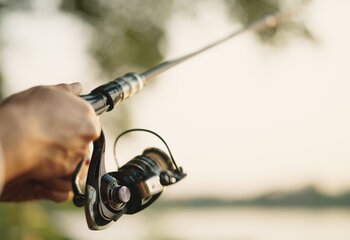
Does Wind Affect Fishing? 7 Tips for Fishing in Windy Conditions
While the wind direction doesn’t necessarily affect fishing conditions, the reason behind the wind direction does. Keep reading as we discuss how wind affects fishing in today’s blog post.
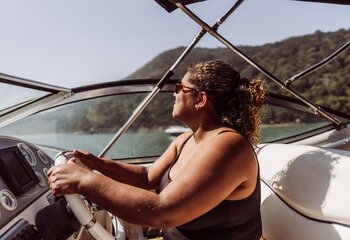
Do You Need a Boating License to Rent a Boat?
Before embarking on your next boating adventure, ensure that you're not breaking any licensing laws. Different areas have different rules, which leads to the question: Do I need a license to rent a boat?
Join Our Newsletter!
Get community news, buying bargains, and how-to guides at your fingertips.
- A-Z of motor boats: your ultimate guide
Motor boats don't often take centre stage in our magazine, but we're about to change that. This in-depth feature explores the different kinds of motorboats, their manufacturers, how they differ from sailboats, and weighs their pros and cons. We'll help you figure out if a motorboat is the right fit for you, when to best venture out on one, and we'll delve into the requirements and conditions for a skipper's licence. In essence, we're bringing you the complete motorboat rundown. All hail the engine!
Differences to a sailboat
The age-old debate of powerboat versus sailboat is a classic theme in many a nautical conversation. We're not here to pick a side between those who favour sails and those who prefer motors. Instead, our aim is to present you with a balanced view, packing all the necessary facts, insights, and knowledge into one comprehensive discussion.
Draft and bridges
A motorboat's draft is significantly shallower, thanks to the absence of a keel. Furthermore, the lack of a mast means there's no need to worry about the boat's height when it comes to passing under bridges. So from a depth and overhead clearance perspective, you're in safe waters with a motorboat.
YACHTING.COM TIP: If you've never sailed under the renowned Pasman-Ugljan bridge, which has spelled disaster for numerous sailing boats, a motorboat provides the perfect chance!
Space and comfort
Broadly speaking, aside from mega yachts or specialist vessels, motorboats provide more space both below and on deck compared to similarly sized sailboats. They also typically feature multiple deck levels. So you can bask in the sunshine on one deck, and find shelter in the shade on another. Furthermore, on a motorboat, you don't have to fret about a precarious jib or the risk of tripping over winches or ropes. The deck tends to be more open and free from sailing gear, allowing for easier movement and relaxation.
If you have crew members who do not tolerate the heeling of a sailboat well, this concern is completely eliminated with motor boats. Unless you're faced with sizeable waves, the boat is likely to maintain stability and you won't need to worry about any significant tilting. This makes a motorboat a more comfortable choice for those sensitive to the motion of the sea.
You wouldn't find such a load on a motorboat
A leisure sailboat simply can't match the speed of a powerboat. While most sailboats average around 7 knots, motorboats can easily reach 15 to 20 knots. If you enjoy the thrill of speed and the feeling of wind in your hair, a powerboat is the perfect choice for you.
Consumption and costs
On the flip side, with the increased speed comes higher fuel costs. While on a sailboat, you might only need to refuel at the end of your trip or 2-3 times a week at most, resulting in a manageable fuel bill. However, if you're sailing for extended periods each day on a motorboat, you'll find yourself refuelling frequently, at a higher cost, and spending a significant amount of time waiting to fill up the diesel tank.
Level of effort and work
Starting a motorboat is straightforward; turn it on and off you go, cruising wherever you fancy. There's no need to fuss over ropes, the jib, sails, lazy bags, lazy jacks, or the whereabouts of the crank. Unlike on a sailboat where there's always something to keep you occupied, a motorboat offers pure relaxation and peace of mind. If you're seeking a laid-back cruising experience, a powerboat is the way to go.
Sailing direction
As long as there are no big waves and the Bora is not blowing against you, you can sail your motorboat comfortably pretty much anywhere you want. This isn't the case with sailboats, where you might have to cruise or alter your destination if the wind is blowing directly against you. While sailboat enthusiasts often say, "the journey is the destination," powerboat users are more about reaching their destination promptly and without fuss.
What is the difference between a motor boat and a sailboat?
Despite their differences, powerboats and sailboats do share some commonalities, with maintenance being the prime one. Regardless of the type of boat you own, upkeep is crucial. This includes taking care of the sails or engine and ensuring regular servicing. Moreover, marina fees apply uniformly to both. The harbour masters charge based on the length of the boat, irrespective of whether it's a sailboat or a powerboat. The only exception might be a catamaran, which typically incurs a higher fee due to its dual-hulled design, making it wider and potentially occupying the space of two conventional berths.
Disadvantages of motor boats
While motor boats offer numerous advantages, it's important to consider their potential drawbacks as well. Let's take off the rose-tinted glasses and delve into some of the downsides associated with powerboats.
Fuel dependency and non-environmental operation
Unlike a sailboat that can harness the wind as a natural and free power source, a motorboat is completely reliant on diesel fuel. Running out of fuel in the middle of your journey can leave you stranded. Furthermore, this dependence on fossil fuels also means that operating a motorboat has a greater environmental impact compared to sailing.
YACHTING.COM TIP: Speaking of ecology, check out our guide — Green sailing: 11 tips for eco-friendly yachting .
Less stability in wind
Motorboats lack a significant keel, resulting in reduced stability when faced with waves and strong winds. Consequently, it is advisable to opt for motorboat rentals during the summer season, when occurrences of powerful winds and waves are comparatively infrequent.
Calm and the smell of the sea
The sound of the engine never leaves you during your voyage which can get on people's nerves. Likewise, the typical smell of burning diesel can start to bother you after a while.
Who is a motor boat best suited for?
A motor boat is well-suited for individuals seeking relaxation, tranquillity, and minimal effort. With the simple act of starting the engine, you can swiftly set sail without any additional concerns. Plus, a motor boat is highly recommended for those who desire to explore a wide range of places, including beaches and other scenic locations. It is particularly advantageous for covering long distances between islands and the mainland within the typical timeframe of a one or two-week vacation. Motor yachts are also a favourable choice for yachters who enjoy fishing, as they provide a comfortable and convenient means of transportation for navigating to different areas and indulging in fishing activities.
YACHTING.COM TIP: Find out what else you can do while sailing in our article — Top 12 fun activities to do on a sailing holiday .
Fishing is an great addition to a boating holiday.
For nature lovers seeking harmony and a closer connection to the natural environment, a sailboat is more preferable than a motorboat. Sailboats provide a serene atmosphere and allow for a deeper appreciation of nature. Additionally, if the aim is to foster teamwork and engage in shared experiences, a sailboat offers more opportunities as it involves handling ropes and sails. But if you want to relax with a bunch of friends, there's nothing better than a powerboat.
Motor boat season
Unlike sailing boats that typically operate in Europe from April to November, motor boats have a more limited season. The majority of motor cruising occurs between June and September, with peak activity in June and July. Other times of the year, motor yachts are less commonly seen at sea. This is because before and after this season, conditions tend to be windier and the sea becomes cooler, which is more appealing to racers on sailing yachts rather than those seeking a tranquillity on a motorboat, particularly in destinations like Croatia.
YACHTING.COM TIP: What winds and weather will you encounter in the Mediterranean over summer? Check out our guide — The 7 most common winds you'll find in the Mediterranean .
Motor boat licence
The licence needed to operate a motor boat depends on two criteria — the engine power and the area where you will be boating (whether sea or inland waters). If you want to cruise on a motor boat with an engine power of less than 4kW , then you don't need a licence. This applies to houseboats or small boats, for example. You can sail a boat with a 4kW to 20kW engine on inland waters with a VMP licence, but for the sea you'll need an international skipper's licence just as for a sailing boat and in some countries (such as Croatia), a radio licence. With engine power above 20kW , for inland sailing and on the sea, you will need a certificate of engine experience for inland sailing in addition to the VMP.
YACHTING.COM TIP: Still hesitating about getting your skipper's licence? Take a look at our 5 reasons to take a skipper's course . Then check out our sailing courses and you'll soon be sailing the seas!
How to choose a motor boat?
Motor boats have a slightly different interior layout than sailboats. The smaller ones often have only one or two cabins and it is automatically assumed that the other couple sleeps in the saloon, often in the bow. Check before you make your final booking that you will have plenty of privacy. Small motor boats are designed for a couple or small family rather than several people who don't know each other.
Route planning
When choosing a boat, take note of how much the boat consumes. You may find that the fuel will cost you the same amount of money as the charter itself in a week's sailing. Plan your itinerary in advance so you know what to expect.
YACHTING.COM TIP: Want to enjoy your cruise to the fullest and without a care in the world? Try hiring a professional skipper or hostess for your yacht. They'll take care of running the boat, cleaning and cooking, leaving you to relax and spend time with your loved ones. Just ask our sales team.
Highly renowned motor boat brands in the charter industry
Here we have picked out the most popular types of motor boats from our search portal.
Probably the most infamous brand of motorboats is Merry Fisher. The Merry Fisher 795 models are among the best sellers and the Merry Fisher 895 is a common sight cruising the coastline of Croatia. Another sought-after model is the Antares 9 OB , which is generously equipped for a comfortable boating holiday, but if you're after something bigger, the Antares 11 Fly is a great choice. The Greenline 33 or its larger sibling, the Greenline 39 , are also fantastic options.
The popular Antares 9 OB model.
Other types of motor boats
Every motor boat is unique, and there can be a wide range of vessels categorized under the name "motor boat." Let's explore some intriguing and lesser-known motor boats that have distinctive features and stand out from the norm.
Small motorboat
Charter services also offer the option to rent small motor boats, which are perfect for day trips to secluded beaches, nearby islands, or bays that are inaccessible by foot. These boats are typically compact and may not have cabins, making them suitable for short excursions. They are particularly recommended for families who have rented an apartment by the sea and wish to explore the surrounding areas by water. In many cases, these small motor boats are equipped with relatively low-powered engines, and in several countries, you may not even require a skipper's license to operate them. We recommend, for example, the Zodiac Madline 2 or the slightly larger Four Winns H210 .
You can also rent a smaller boat.
Few people can buy a superyacht. And although many more people can rent one, it is still quite expensive. A superyacht or megayacht is considered to be a boat longer than 80 feet but you'll have to hire a professional skipper as only a handful of skippers have a licence for a boat of this length. For example, we offer the superyacht Azimut Grande 27 or MY Custom Line 52 m . These can cost up to 100,000 euros to hire for a week, but the price often includes a crew to look after the boat (including the professional skipper).
Superyacht Azimut Grande 27
The main difference from the motor boats we rent at sea is that houseboats sail on freshwater streams and are designed for exploring rivers, canals, lakes, ponds, and dams. Although houseboats generally have less powerful engines, this feature often allows them to be rented without a license in most destinations. It's important to note that these houseboats are far from mundane, offering a unique and enjoyable holiday experience on calm waters. Check out these breathtaking destinations you can explore on a houseboat.
YACHTING.COM TIP: Never been on a houseboat? Take a look at our our guide — First time on a houseboat: 25 things you need to know!
This is what one of the most popular houseboats, the Nicols Estivale Sixto Prestige, looks like.
Power catamaran
Recently, motor catamarans or power catamarans have become more and more popular. They combine the advantages of a catamaran (two hulls, stability, space, nets to lie on,...) while offering the speed, carefree and comfort of a motor boat. Never driven a catamaran? Check out our article — First time on a catamaran: what you need to know
Body of a two-hulled power catamaran.
YACHTING.COM TIP: Wondering what are all the types of boat you can charter? You will be surprised how many there are. Check out the article — Boats for rent: what types of boats do charter companies offer?
How to operate a motor boat?
If you have sailing experience, driving a powerboat will seem like something very simple. You don't have to worry about ropes, sails, vignettes, masts or a flying jib. You simply start the boat and cruise wherever you want. Then it's the same as mooring with a sailboat.
One important aspect to be aware of when operating a motor boat is the engine trim . Engine trim refers to the adjustment of the angle between the propeller and the bottom of the boat. Ideally, the propeller should be positioned vertically downward. As a motor boat gains speed, the bow of the boat may lift, causing the propeller to partially submerge. In such cases, it is the responsibility of the captain to intervene and adjust the engine trim to ensure that the propeller is aligned vertically and not at any angle other than 90 degrees to the water surface. This adjustment is crucial to prevent the boat from jumping or unnecessarily impacting the water with the bow. By maintaining the correct trim, the boat can navigate efficiently and provide a comfortable sailing experience for all on board.
YACHTING.COM TIP: Do you know how to operate the outboard motor on a dinghy? Read our article — Dinghy and outboard motor: what you need to know .
Where to sail with a motor boat?
We've selected 3 regions where you can enjoy a fantastic time with a motorboat and take advantage of its superior speed.
Vineyards and islands off Hvar
Start your journey from Split and make your way to the enchanting island of Solta or the sun-soaked Brac. For a glimpse of Croatia's renowned beaches, don't miss out on visiting Zlatni Rat. Proceed to the captivating island of Hvar, where we suggest exploring either the lively town of Hvar itself, the more serene town of Stari Grad, or the authentically charming Vrboska. Indulge in an overnight stay at a tranquil cove on the island of Ščedro, where you can delight in snorkeling alongside majestic clams. Depending on your available time and preferences, continue your voyage to the island of Vis and discover the picturesque village of Komiza, where you can experience the novelty of standing on a buoy or by the pier. During the day, take a trip to the island of Bisevo, home to the famed Blue Spila (blue cave).
Ionian Sea (and turtles!)
Rent a boat on the Greek island of Corfu. Upon taking over the boat on Saturday, take a leisurely stroll to the charming capital, Kerkyra, where you'll be enchanted by its delightful streets and atmosphere. Next, set sail south towards the island of Paxos, renowned for its breathtaking bays. During the day, make sure to indulge in a refreshing swim in Lefkada, a destination in the western part that boasts stunning beaches reminiscent of the Caribbean. Consider spending the night in the lively bay of Vasiliki, known for its vibrant nightlife and one of Greece's most famous kebab joints. The following day, continue your journey to Kefalonia and then proceed onwards to Zakynthos, famously known as the "island of turtles." If possible, sail as far south as you can towards Zakynthos, maximizing your exploration of this captivating destination.
Italian temperament
Experience the enchanting Bay of Naples, beginning in Baiae and venturing to Ischia, where you can navigate its waters at your leisure. Along the way, explore the quaint islet of Procida. Consider Ponza as an alternative to the bustling island of Capri. If time permits, visit the renowned Positano. Carry on to the breathtaking town of Amalfi, with its cliffside houses. Above all, indulge in la dolce vita.
Whether it's a motorboat or a sailboat, I'll find you the perfect choice. Give me a call.

Denisa Nguyenová
Faq motor boats.

How to Start a Motorboat? (A Step-By-Step Guide)

Do you want to learn how to start a motorboat? Operating a motorboat can be a thrilling way to enjoy the water, but it’s important to understand the proper steps to get it going.
This step-by-step guide will walk you through the process, from pre-start safety checks to understanding fuel and oil levels.
We’ll also discuss how to create a safe space and use appropriate safety gear.
So, if you’re ready to take the plunge, let’s get started!
Table of Contents
Short Answer
To start a motorboat, you’ll need to make sure it has fuel and check that all the switches are in the off position.
Next, insert the key into the ignition and turn it to the on position.
Then, press the start button and the motorboat should begin to run.
Finally, adjust the throttle to the desired speed.
Pre-Start Safety Checks
Before getting ready to start a motorboat, it is important to take the time to do a few pre-start safety checks.
This includes checking the fuel and oil levels, as well as inspecting the engine for any signs of damage or leaks.
It is essential to keep the fuel and oil levels topped up since these are necessary for the boat to run properly.
In addition, any potential problems with the engine should be identified before starting the motorboat.
This could include checking for loose wiring, corroded spark plugs, and any other signs of wear and tear.
Once these steps are complete, the engine can be started.
Locating the Ignition Key

When it comes to starting a motorboat, one of the first steps is locating the ignition key.
Depending on the make and model of the boat, the ignition key may be in a variety of locations.
It is important to familiarize yourself with the boat’s ignition system before you attempt to start it, as it will make the process much easier.
If your motorboat has a keyless ignition, there will be a special fob or keypad that you need to use to start the engine.
Once you have located the ignition key, you can then move on to the next step in the process: warming up the engine. Before starting the motorboat, it is important to allow the engine to warm up. This helps to ensure that the engine is running at peak efficiency. In order to warm up the engine, you should turn the ignition key and allow the engine to idle for several minutes before pressing the start button or turning the choke off. It is important to remember to use the appropriate safety gear when operating a motorboat, including a life jacket and other necessary equipment. With the right preparation and knowledge, anyone can start a motorboat and enjoy a day out on the water.
Starting the Engine
Starting a motorboat can be a daunting task for first-time boaters, but with the right guidance and preparation, it can be easy and safe.
Before starting the motorboat, it is important to check the fuel and oil levels, as well as the engine for any signs of damage or leaks.
Once these steps are completed, the engine can be started.
This typically involves turning the ignition key and allowing the engine to warm up before pressing the start button or turning the choke off.
When starting the engine, it is important to be aware of the environment around the boat.
Check to make sure that there are no other boats, swimmers, or other obstacles in the area that could be affected by the boats wake.
It is also important to have the appropriate safety gear on board, such as a life jacket for each passenger.
Once the engine is started, it is important to allow the engine to warm up before attempting to drive the boat.
This is usually done by increasing the RPMs until the engine reaches an optimal temperature.
Depending on the boat, this can take anywhere from a few minutes to several minutes.
Once the engine has reached the right temperature, it is time to start driving.
When driving a boat, it is important to be aware of the other boats and obstacles in the area.
Always keep an eye out for other boats and follow the rules of the waterways.
It is also important to use the proper techniques for turning and stopping the boat.
This includes using the appropriate throttle, steering, and trim controls to make sure the boat is operated safely and efficiently.
Finally, when the boat is docked or parked, make sure to turn off the engine and secure the boat in its designated area.
This will ensure that the boat and its passengers are safe and secure while it is not in use.
By following these steps, anyone can start a motorboat and enjoy a day out on the water.
With the right preparation and knowledge, operating a motorboat can be an enjoyable and safe experience.
Creating a Safe Space

Starting a motorboat can be a daunting task, so it is important to create a safe environment before doing so.
This involves ensuring that all safety gear is on board and in working order, such as life jackets, flares, and other emergency equipment.
Additionally, the engine should be checked for any signs of damage or leaks before starting.
This can be done by visually inspecting the engine and checking the fuel and oil levels to make sure they are full.
It is also important to check the weather conditions and make sure the boat is in an area with calm waters and no other vessels nearby.
These steps can help create a safe environment for the motorboat and ensure a smooth and safe start.
Understanding Fuel and Oil Levels
Starting a motorboat can be a bit intimidating for those who don’t have a lot of experience with boats, but with the right preparation and guidance, it can be a safe and enjoyable experience.
One of the most important steps in starting a motorboat is to check the fuel and oil levels.
This is an important safety measure that should be done each time before starting the engine.
It is important to make sure that the fuel and oil levels are right for the type of motorboat you are using.
Different types of boats will require different types of fuel and oil, so it is important to know what type of motorboat you are using and what fuel and oil it requires.
Additionally, it is important to check the fuel and oil levels on a regular basis.
This will ensure that the engine is running properly and will help to prevent any damage or leaks.
When checking the fuel and oil levels, it is important to look for any signs of damage or leaks.
If any damage or leaks are found, it is important to take the necessary precautions to repair or replace the part in question before starting the engine.
If the fuel and oil levels are correct, then the engine can be started safely.
It is also important to remember to use the appropriate safety gear when operating a motorboat, including a life jacket and other necessary equipment.
With the right preparation and knowledge, anyone can start a motorboat and enjoy a day out on the water.
Warming Up the Engine

Warming up the engine is an important step in starting a motorboat.
This process can be done in a couple of different ways, depending on the type of engine and the temperature of the water.
For a gasoline engine, it is important to warm up the engine before starting.
This can be done by turning the ignition key and allowing the engine to idle for a few minutes, allowing the fuel to warm up.
This will allow for a smoother start-up and help the engine run more efficiently.
For a diesel engine, the water temperature should be taken into account when warming up the engine.
If the water is cold, the engine should be allowed to idle for a few minutes to allow the engine to heat up.
If the water is warm, the engine can be started immediately.
Once the engine is warmed up, the start button or choke can be turned off.
It is important to remember to use the appropriate safety gear when operating a motorboat, including a life jacket and other necessary equipment.
Using Appropriate Safety Gear
Using appropriate safety gear is an essential part of starting a motorboat.
This includes wearing a life jacket at all times, and having other necessary equipment such as a first aid kit, fire extinguisher, and communication devices such as a VHF radio.
For those who are inexperienced, it is also important to take a boating safety course before attempting to start a motorboat.
This will provide the necessary information on how to safely operate a motorboat, as well as the appropriate safety gear required.
It is also important to remember that motorboat operators are responsible for the safety of any passengers they may have onboard, so it is important to ensure that everyone is wearing a life jacket and that all safety equipment is in good working order.
When out on the water, it is important to follow all laws and regulations, and to be aware of any potential hazards.
By taking the necessary steps to prepare and using the appropriate safety gear, anyone can enjoy a safe and enjoyable day out on the water.
Final Thoughts
Starting a motorboat can be a daunting task for first-time boaters, but with the right guidance and preparation, it can be safe and easy.
By following the steps outlined in this guide, anyone can confidently start a motorboat and enjoy a day out on the water.
Now that you know how to start a motorboat, it’s time to put your newfound knowledge into action.
So grab your life jacket and get out on the water!
James Frami
At the age of 15, he and four other friends from his neighborhood constructed their first boat. He has been sailing for almost 30 years and has a wealth of knowledge that he wants to share with others.
Recent Posts
When Was Banana Boat Song Released? (HISTORICAL INSIGHTS)
The "Banana Boat Song" was released in 1956 by Harry Belafonte. This calypso-style song, also known as "Day-O," became a huge hit and remains popular to this day for its catchy tune and upbeat...
How to Make Banana Boat Smoothie King? (DELICIOUS RECIPE REVEALED)
To make a Banana Boat Smoothie King smoothie at home, start by gathering the ingredients: a ripe banana, peanut butter, chocolate protein powder, almond milk, and ice. Blend the banana, a scoop of...
- PRO Courses Guides New Tech Help Pro Expert Videos About wikiHow Pro Upgrade Sign In
- EDIT Edit this Article
- EXPLORE Tech Help Pro About Us Random Article Quizzes Request a New Article Community Dashboard This Or That Game Happiness Hub Popular Categories Arts and Entertainment Artwork Books Movies Computers and Electronics Computers Phone Skills Technology Hacks Health Men's Health Mental Health Women's Health Relationships Dating Love Relationship Issues Hobbies and Crafts Crafts Drawing Games Education & Communication Communication Skills Personal Development Studying Personal Care and Style Fashion Hair Care Personal Hygiene Youth Personal Care School Stuff Dating All Categories Arts and Entertainment Finance and Business Home and Garden Relationship Quizzes Cars & Other Vehicles Food and Entertaining Personal Care and Style Sports and Fitness Computers and Electronics Health Pets and Animals Travel Education & Communication Hobbies and Crafts Philosophy and Religion Work World Family Life Holidays and Traditions Relationships Youth
- Browse Articles
- Learn Something New
- Quizzes Hot
- Happiness Hub
- This Or That Game
- Train Your Brain
- Explore More
- Support wikiHow
- About wikiHow
- Log in / Sign up
- Cars & Other Vehicles
How to Start an Outboard Motor
Last Updated: June 22, 2024 Fact Checked
This article was co-authored by Jason Shackelford and by wikiHow staff writer, Dan Hickey . Jason Shackelford is the Owner of Stingray Auto Repair, a family owned and operated auto repair shop with locations in Seattle and Redmond, Washington. He has over 24 years of experience in auto repair and services, and every single technician on Jason’s team has more than 10 years of experience. There are 10 references cited in this article, which can be found at the bottom of the page. This article has been fact-checked, ensuring the accuracy of any cited facts and confirming the authority of its sources. This article has been viewed 74,275 times.
Boating is a super fun, liberating activity you can enjoy with friends and family—as long as someone knows how to get that outboard motor started. It might look like a complicated piece of machinery, but making that engine roar is actually a really straightforward, easy to learn process. That’s why we’ve put together a handy guide to starting (and stopping) an outboard motor boat with manual or electric start. If you’re ready to captain your ship and tread the high seas, keep scrolling!
Open the ventilation cap on the fuel tank.

- Keep the ventilation cap closed when the boat is not in use.
- When you open the cap, take an extra second to double check you have enough fuel and to check for debris in the fuel tank.
- If your tank is self-ventilating, you can skip this step.
Tilt the motor into the water.

- Lowering the motor ensures everyone on board’s safety in the event that the motor starts unexpectedly.
- Tilting the motor down also allows fuel to get to the carburetors more easily.
Engage the kill switch on manual ignition motors.

- The motor won’t start without the kill switch since it completes the electrical circuit needed to run.
- Kill switches protect you and others in the water by stopping the boat when someone falls out due to waves, hitting an object, or mishandling the boat. [4] X Research source
- On electric start motors, the kill switch is the key you place in the ignition.
Squeeze the primer bulb.

- You’ll know the motor is flooded if it won’t start and you smell gas. If this happens, first wait at least 5 minutes for some fuel to flow back into the tank and try starting the motor again.
- If it still won’t start, shift to neutral, hold the throttle open, and crank the engine. This is called a clear-flood start. [6] X Research source
Put the gear shift lever in the neutral position.

Turn on the choke.

- Look for a switch labeled “open” and “close” if there’s a choke lever. Otherwise, the choke is a small button on the front of the motor.
- Some electric start motors have a choke switch like manual ignition motors. On others, activate the automatic choke by pushing the key deeper into the ignition.
- If the engine is still warm, you may not need the choke to get started unless the engine won’t start after a few pulls of the starter cord.
Start the ignition.

Turn off the choke.

- If you have an automatic choke on an electric start motor, release the key into its normal position to turn off the choke. [11] X Research source
- Once the choke is off and the motor’s running, you’re ready to cruise!
Shift forward or backward to drive the boat.

- If your boat has a steering wheel, direct the boat just like a car. If it has a tiller, remember that pushing it left will move you to the right and vice versa.
- Once you’re cruising, adjust the trim to raise or lower the bow of the boat as desired.
Aim the boat in the direction you want to stop.

- There’s no way to brake, but the boat will slow very rapidly once you shift to neutral or cut the engine.
Shift back to neutral.

- Try not to switch directly between forward to backward gears, as this might cause mechanical damage to your boat.
Turn off the motor.

Close the ventilation cap and tilt the motor up.

Community Q&A

- Follow these steps for both 2-stroke and 4-stroke motors. Thanks Helpful 0 Not Helpful 0
- To check on your motor after a long season of boat storage, try starting your motor out of water to test it before you drive. Thanks Helpful 0 Not Helpful 0
- Maintain your outboard motor during boating and storage seasons for the smoothest starts and efficiency. Thanks Helpful 0 Not Helpful 0

You Might Also Like

- ↑ https://goneoutdoors.com/hook-up-fuel-tank-outboard-motor-12214577.html
- ↑ https://www.youtube.com/watch?v=-A7Q65PMn3g
- ↑ https://www.discoverboating.com/resources/how-to-drive-a-boat
- ↑ https://www.takemefishing.org/blog/may-2021/3-reasons-for-a-boat-kill-switch/
- ↑ https://goneoutdoors.com/keep-prime-outboard-motor-10011554.html
- ↑ https://goneoutdoors.com/start-flooded-outboard-motor-7805507.html
- ↑ https://www.youtube.com/watch?v=-j9358PHX3k
- ↑ https://www.boatsafe.com/want-charge/
- ↑ https://pontoonopedia.com/pontoon-boat-motor-wont-start/
- ↑ https://www.boatsafe.com/want-charge/
About This Article

- Send fan mail to authors
Reader Success Stories
Feb 19, 2019
Did this article help you?

Featured Articles

Trending Articles

Watch Articles

- Terms of Use
- Privacy Policy
- Do Not Sell or Share My Info
- Not Selling Info
wikiHow Tech Help Pro:
Level up your tech skills and stay ahead of the curve

Coppercoat: The environmentally sensitive antifoul choice *sponsored post*

Yachting Monthly sponsors the Chichester Marina Boat Show and Watersports Festival

Round the Island Race 2019: Entries open

Düsseldorf Boat Show 2019: Fairline announces yacht line-up

Düsseldorf Boat Show 2019: Bavaria to showcase its complete range of motoryachts
- Subscribe Now
- Digital Editions
Motor boats for beginners: Everything you need to know
- Isobel Smith
Looking to get into motor boats? Discover the options available that’ll see you out on the water in no time

Speed, comfort and style – these are the mantras of motor boat fans. You can go from flying through the waves at 35 knots to lying on a sunpad at some remote anchorage, drink in hand, and still make it home in time for tea.
Motor boats are a great way to get out on the water and it’s fairly easy to pick up the basics. Read our guide to find out more…
Boat training
The first step to enjoying motor boats is taking the necessary boat training that’ll teach you everything you need to know about boat handling.
The RYA has a number of courses on offer , ranging from complete beginners, all the way through to those looking to test their motor boat skills in more demanding conditions.
The RYA’s level 1 course is a great place to start for a complete beginner, but if you have some experience already, then taking the RYA level 2 course may be a better option. Either course is no longer than two days, with level 1 costing around £200 and level 2 around £340.
There are hundreds of RYA training centres throughout the UK that offer the necessary training and you can use the RYA’s online tool to find your nearest venue .
Hiring motor boats
Once you’ve developed a love of boating, it’s not surprising that you’ll want to spend more and more time out on the water. Hiring a boat is a commitment-free way to enjoy the sport without costs such as maintenance and mooring fees.
Many centres across the UK will allow you to hire a small RIB for either a few hours or up to a week. You can expect to pay up to £50 per hour for motor boat hire, depending on the make and model and around £140 for a full day.
Buying a boat
Many people dream of buying a motor boat and depending on what you’re looking for, you can pick up some models of smaller boats on the market for just a few thousand pounds.
Take a look at an online brokerage site to see average prices and search MBY’s boat reviews to find a model that suits your needs. If you’re not sure which boat would be best for your needs you can ask our motor boat forum community for recommendations.
Boat membership
Boat membership schemes are a great alternative to owning a boat as you can get experience out on the water without the financial commitment. All you have to do is pay a joining fee and then a fixed monthly sum to use a boat.
The majority of boats involved in boat memberships will have one owner member and up to seven memberships per boat. Once signed up, you can use an online calendar to book your time on board.
There are three different types of membership boating: single, flexible and crewed. If you want to use the same boat then single boat membership is a good option, while flexible gives you the chance to skipper a boat of your choice when you want.
On a crewed membership scheme you can join a skippered boat with similar people for 10 days throughout the year or make private crewing arrangements.
Prices will vary but RIBs will set you back around £300 per month, while a 40ft sportscruiser could cost you up to £1,000 a month, in addition to fuel costs.
Boat sharing
Another alternative is shared boat ownership , whereby you share the purchase and running costs of a vessel with others, making it significantly cheaper than buying a motor boat outright on your own.
The boat is managed for you so you can focus on being out on the water rather than administration and maintenance.
Chartering motor boats
Chartering a yacht is essentially hiring a boat for a fixed period of time in a specific location, ranging from exotic destinations halfway across the world to holiday spots in UK waters.
Countries such as Greece, Turkey and Croatia are extremely popular charter destinations but there are hundreds to choose from.
Depending on the size of boat, location and whether your charter includes crew you can pay anything from £500 pp upwards.
- 2024 BOAT BUYERS GUIDE
- Email Newsletters
- Boat of the Year
- 2024 Freshwater Boat and Gear Buyers Guide
- 2024 Boat Buyers Guide
- 2024 Water Sports Boat Buyers Guide
- 2024 Pontoon Boat Buyers Guide
- Cruising Boats
- Pontoon Boats
- Fishing Boats
- Personal Watercraft
- Water Sports
- Boat Walkthroughs
- What To Look For
- Watersports Favorites Spring 2022
- Boating Lab
- Boating Safety
- Ultimate Boating Giveaway

Right-of-Way Rules for Boaters
- By Jeff Hemmel
- April 20, 2022
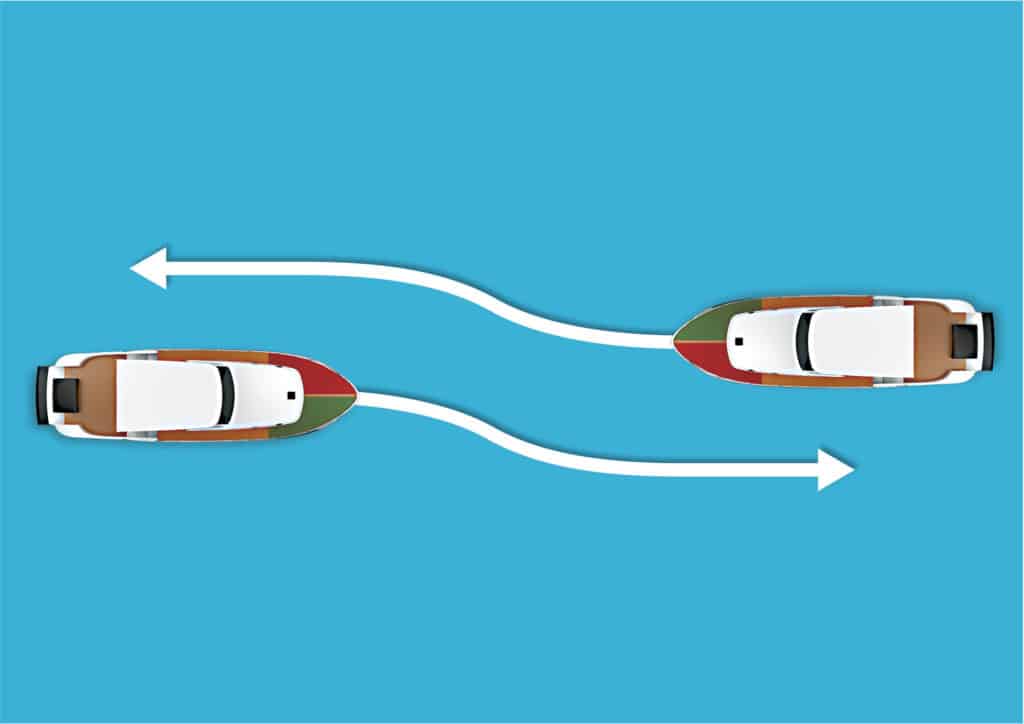
There is no right of way on the water. Every boater is obligated to do what is required to avoid collision. In any meeting of boats, one is deemed the stand-on vessel and the other the give-way vessel. The rules of the road explain the situation more completely and can be learned in a boating safety course. This article serves as a refresher and a reminder on how to handle some common meeting scenarios.
While more common in a channel or narrow pass, head-to-head meetings can happen anywhere on the water. When encountering an oncoming boat head-on, the rule is simple: Each boat is a give-way or burdened vessel and should stay to its right, altering course to starboard and allowing each craft to pass to the port (left) side of the other boat.
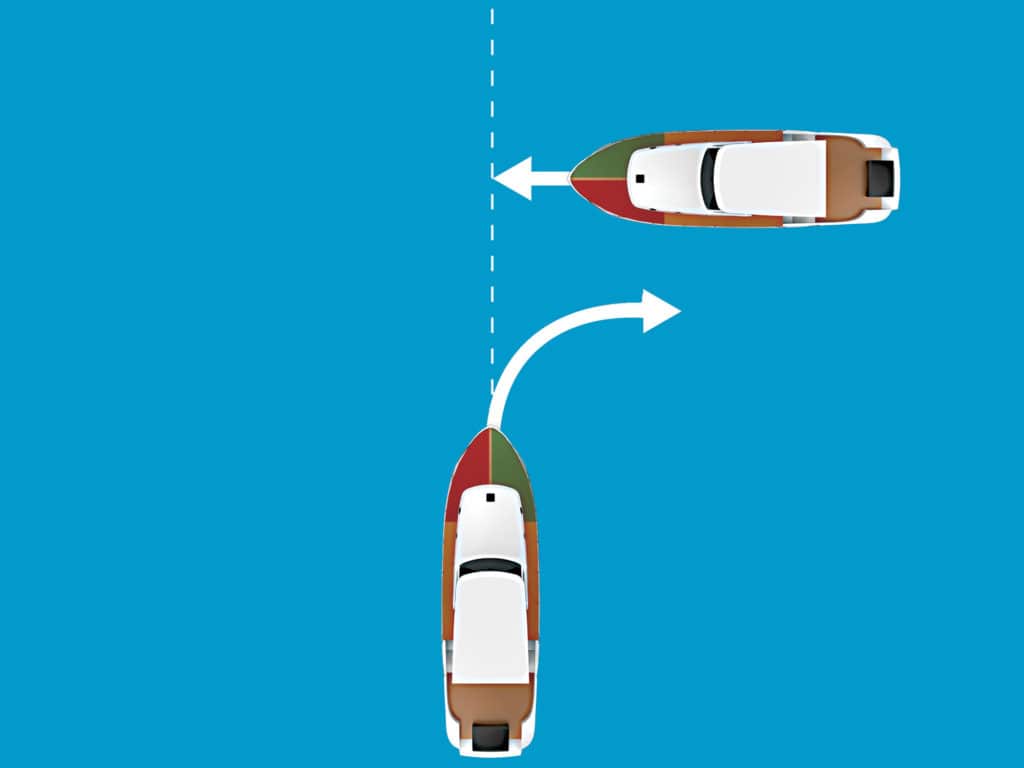
If the other boat is to your starboard (right), it’s considered the stand-on or privileged vessel and is obligated to maintain course and speed. Your boat is the give-way vessel and is obligated to slow or alter course to pass behind it, ideally. If the boat intersecting your path is to port (left), it’s the give-way vessel. It’s obligated to yield while you’re obligated to maintain course and speed.
When overtaking another boat, keep in mind that the other boat is the stand-on vessel and yours is the give-way vessel. Your first move? Determine to which side of that craft is the safest to pass. Consider oncoming traffic, waterway markers, obstacles, or even bends in the channel. Once you have a clear path with good forward visibility, increase your speed enough so that you can safely overtake the other vessel, giving the craft a wide berth.
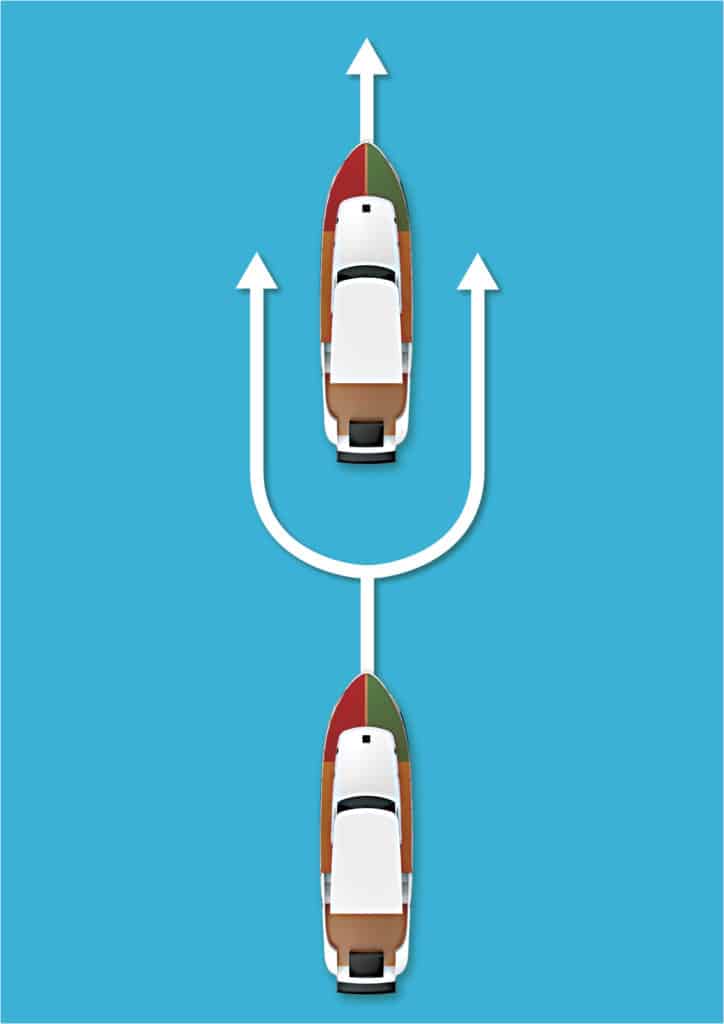
Encountering Kayaks, Sailboats, Etc.
Some vessels will almost always be the stand-on boat, and you must yield no matter the scenario, unless doing so will create an unsafe situation. Typically, this list includes paddlecraft and sailboats not under power, but it also includes larger craft, like ships or freighters. Realize these craft are not as maneuverable as most powerboats and, as such, the powerboat is deemed the give-way vessel.
Read Next: Boating Navigation Basics
When the Other Guy Doesn’t Know the Rules
No matter if you are the stand-on or give-way vessel, always be prepared in case the other boater doesn’t respond as you expect. Operate defensively, and be ready to yield, slow speed or change course to avoid any potentially dangerous situation. A good tip? Give other boaters plenty of space—100 feet or more—to allow enough time and distance to properly react and avoid an accident.
Know Your Colors
Do you know how to handle these scenarios at night, when you can’t see another boat, let alone determine its direction? Know your colors. Boats are required to display a green light to starboard (right) and a red light to port (left) at their bow, and most boats must display a single all-around white light at the stern. This combination of lights will help you determine which direction a boat is moving and if it’s likely to cross your path.
- More: Boating Safety , How-To , May 2022 , Seamanship
More How To
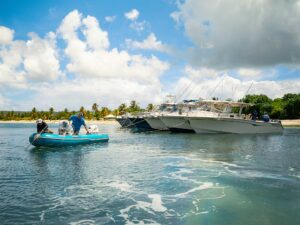
Grady-White Pulls off Its Largest Raft-up Ever in Vieques, Puerto Rico
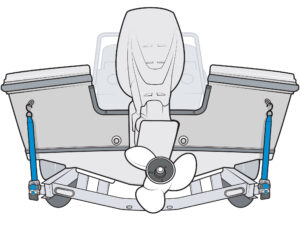
Installing Retractable Transom Straps
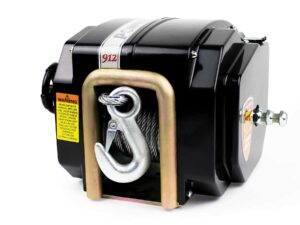
How to Choose a Trailer Winch
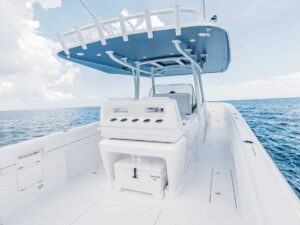
Best Non Skid Boat Deck Paint

2024 Alumacraft Timeline: Two Groups of Boaters x One Day Out on the Water
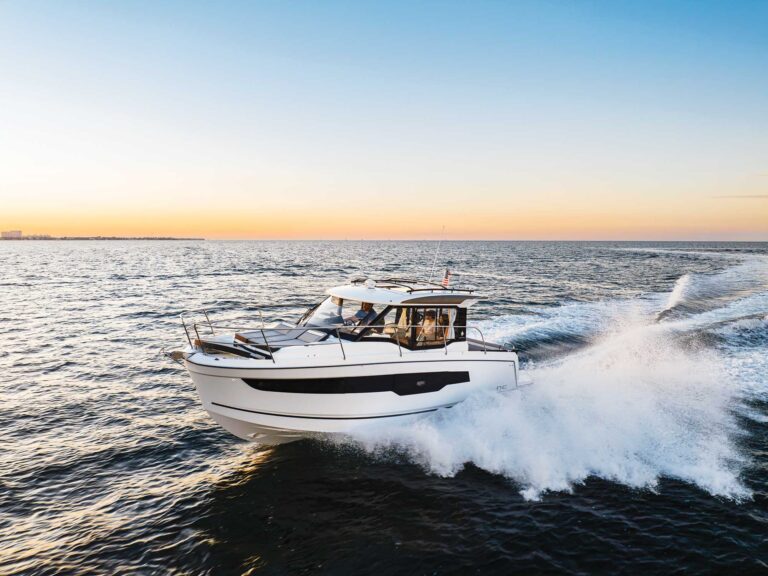
Boat Test: 2024 Jeanneau NC 895 Sport Series 2

Hydrogen Power for Boats

- Digital Edition
- Customer Service
- Privacy Policy
- Terms of Use
- Cruising World
- Sailing World
- Salt Water Sportsman
- Sport Fishing
- Wakeboarding
Many products featured on this site were editorially chosen. Boating may receive financial compensation for products purchased through this site.
Copyright © 2024 Boating Firecrown . All rights reserved. Reproduction in whole or in part without permission is prohibited.





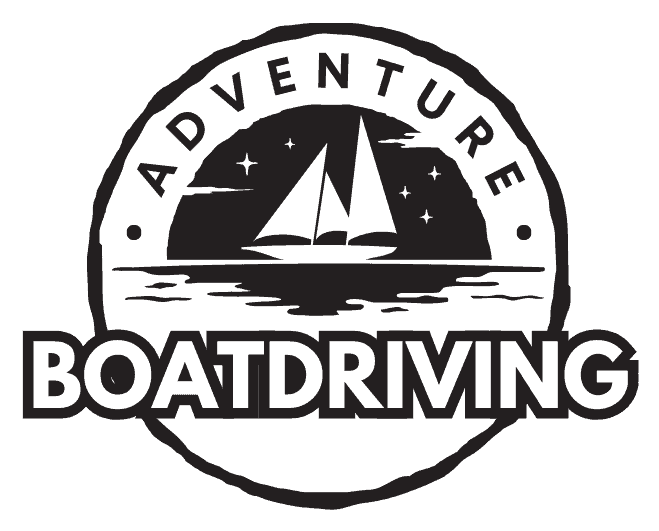
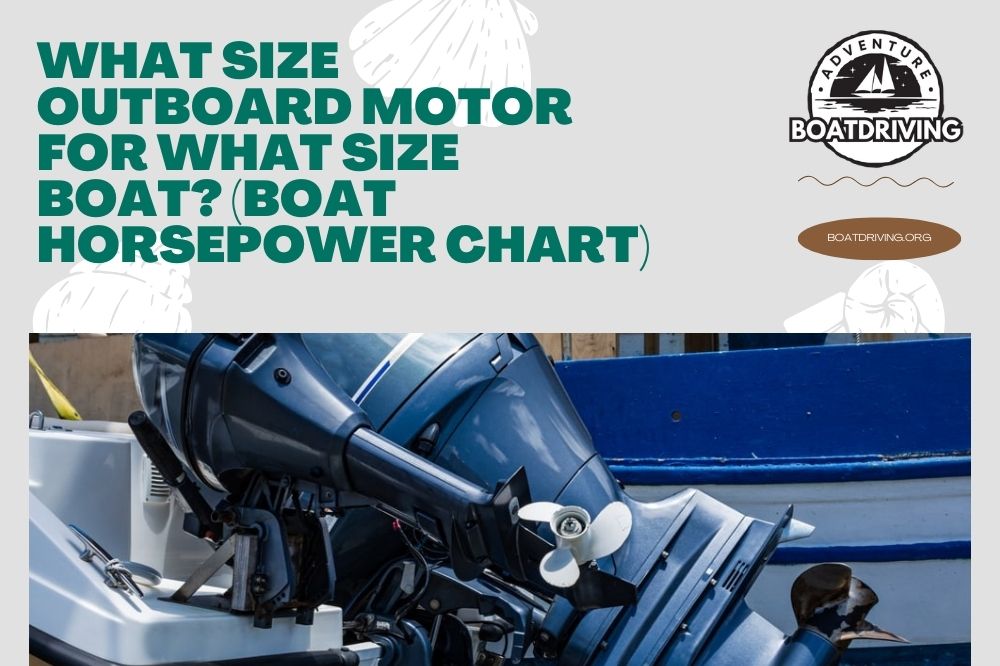
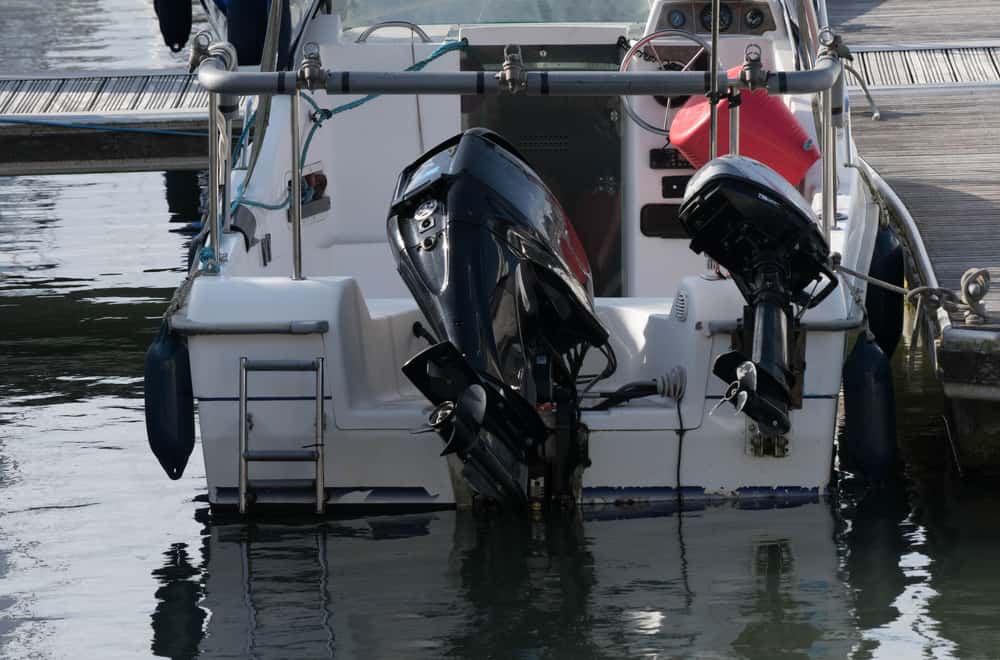
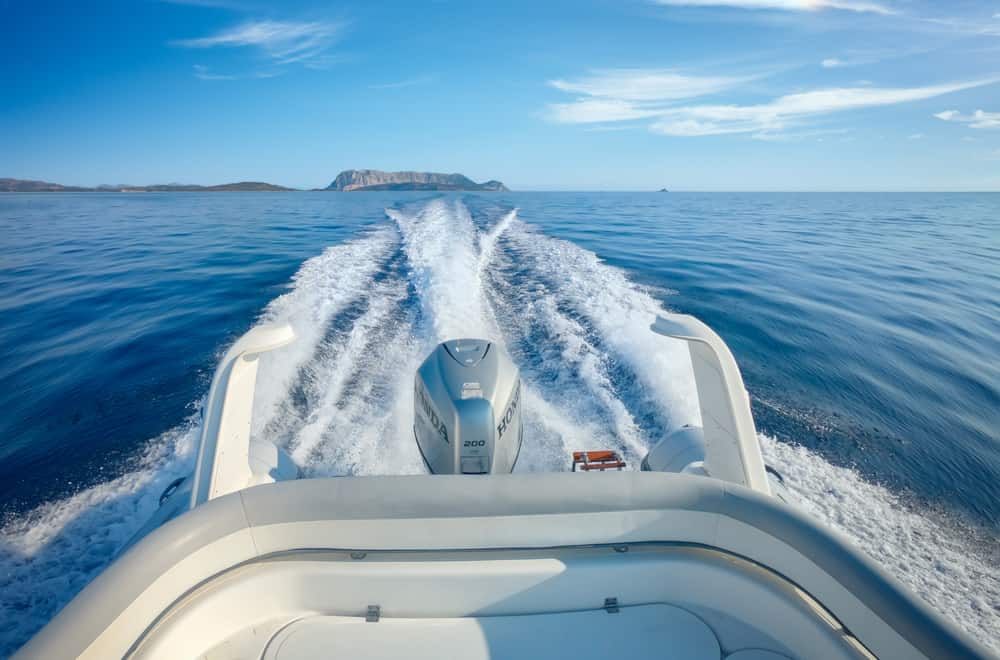
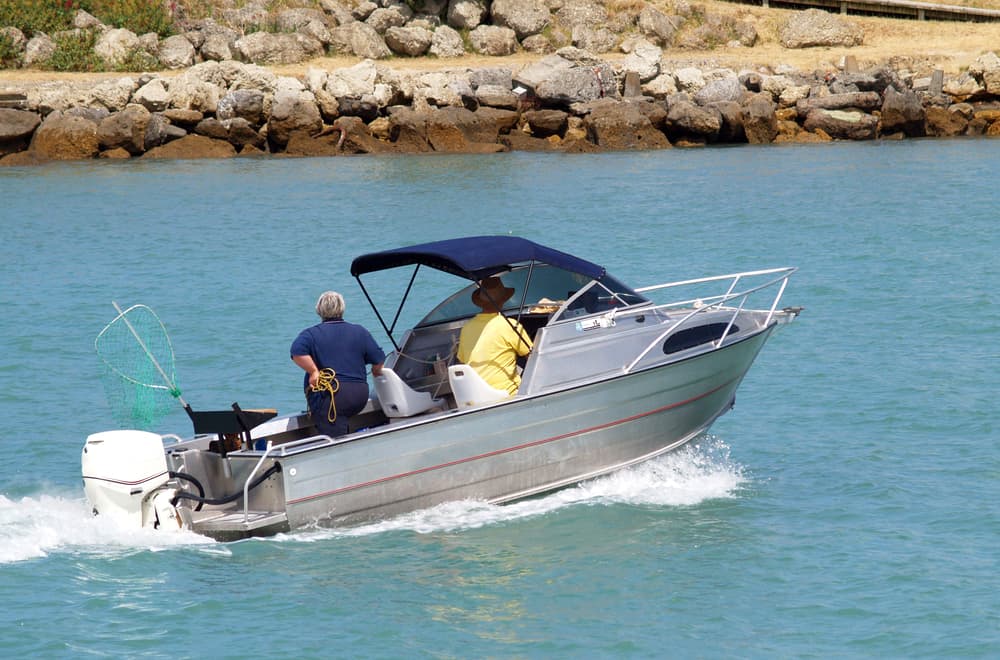
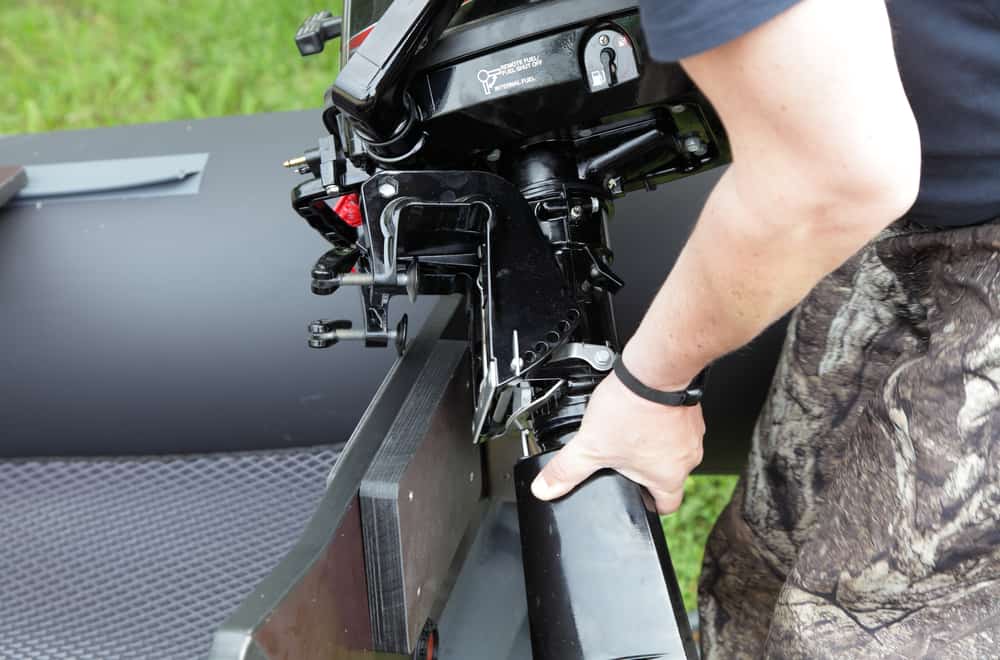
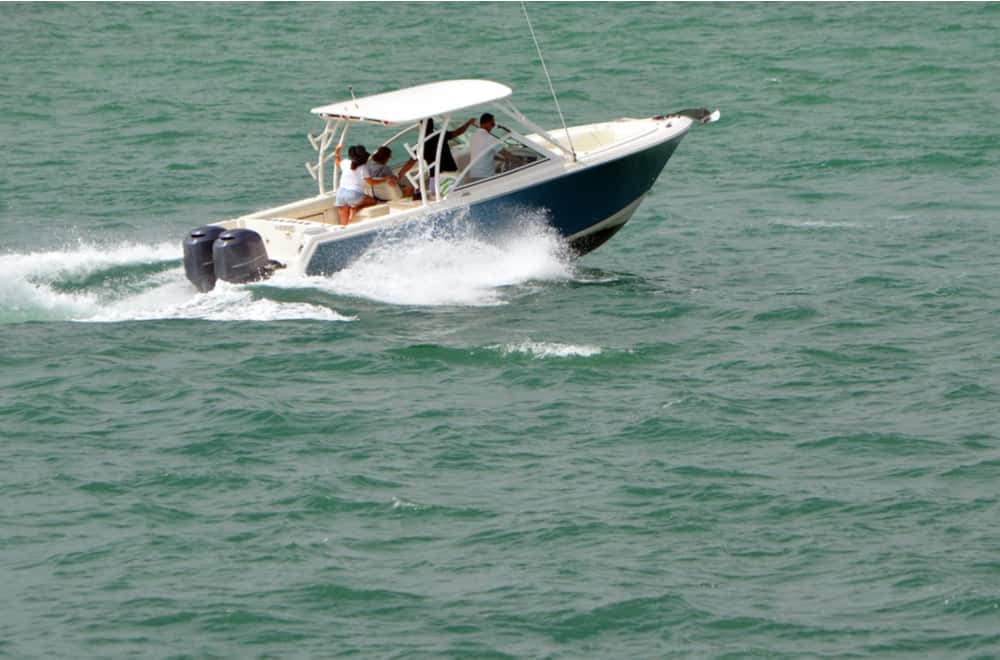
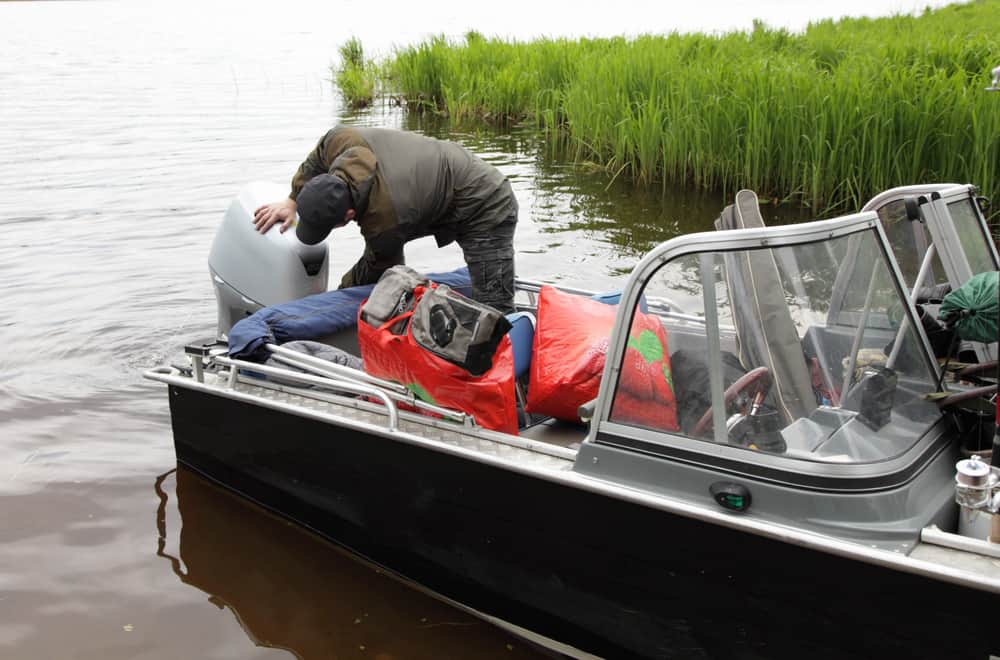

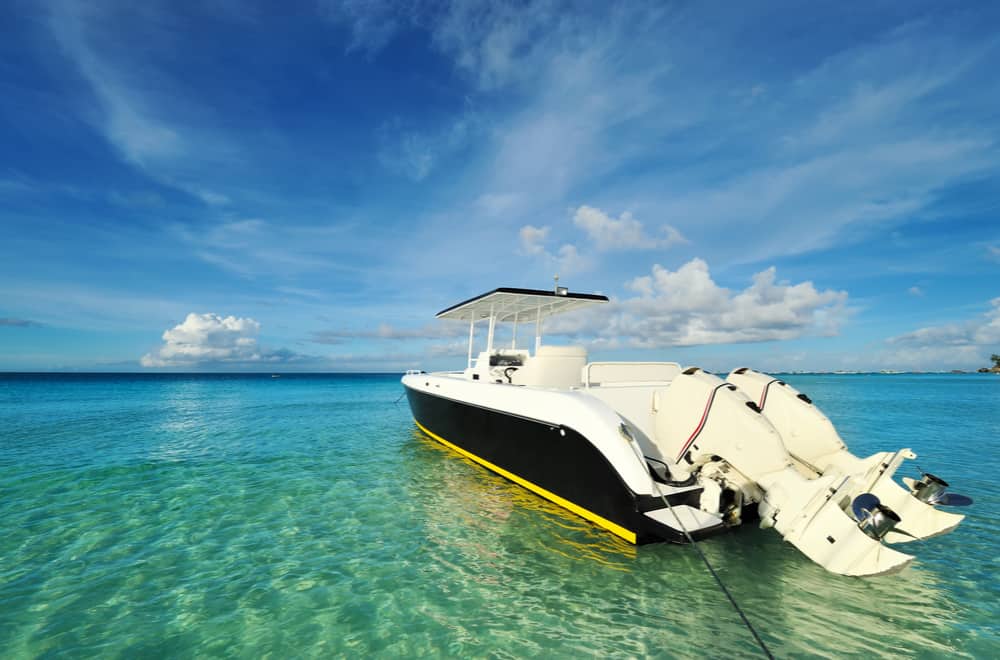






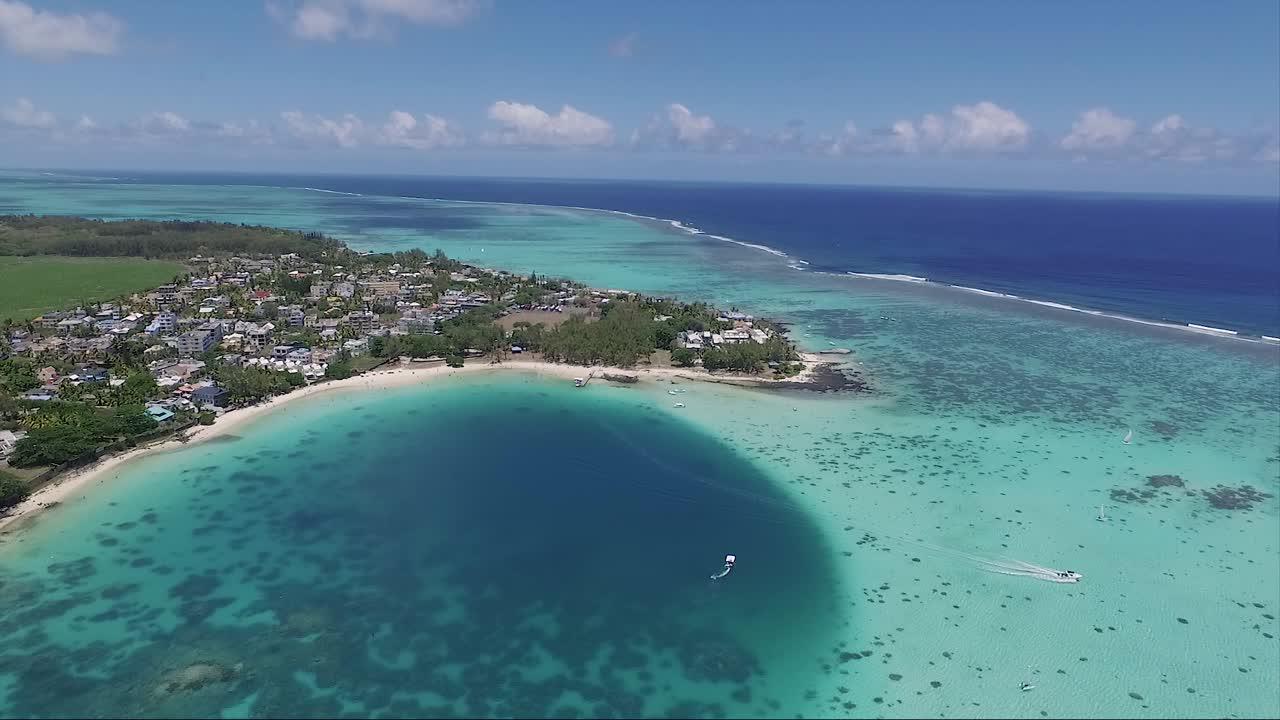
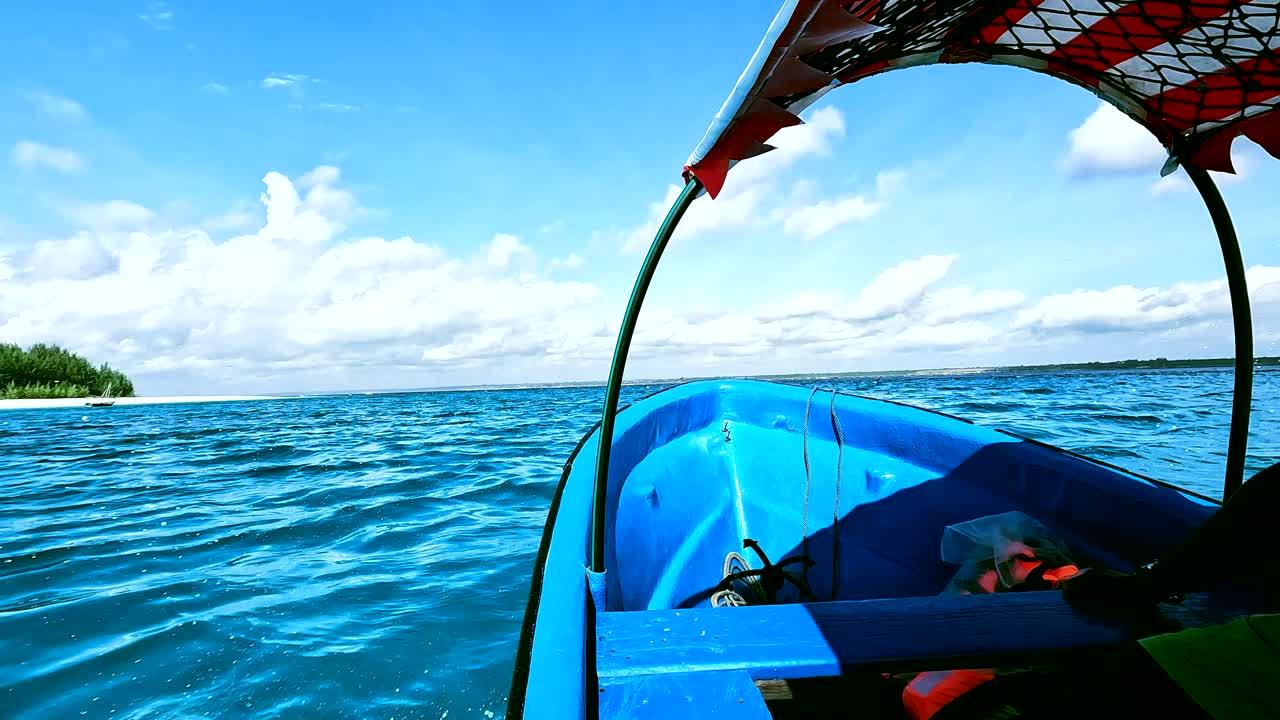
















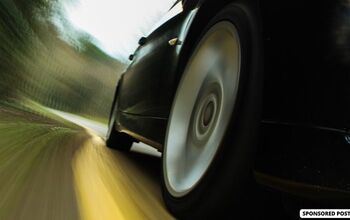














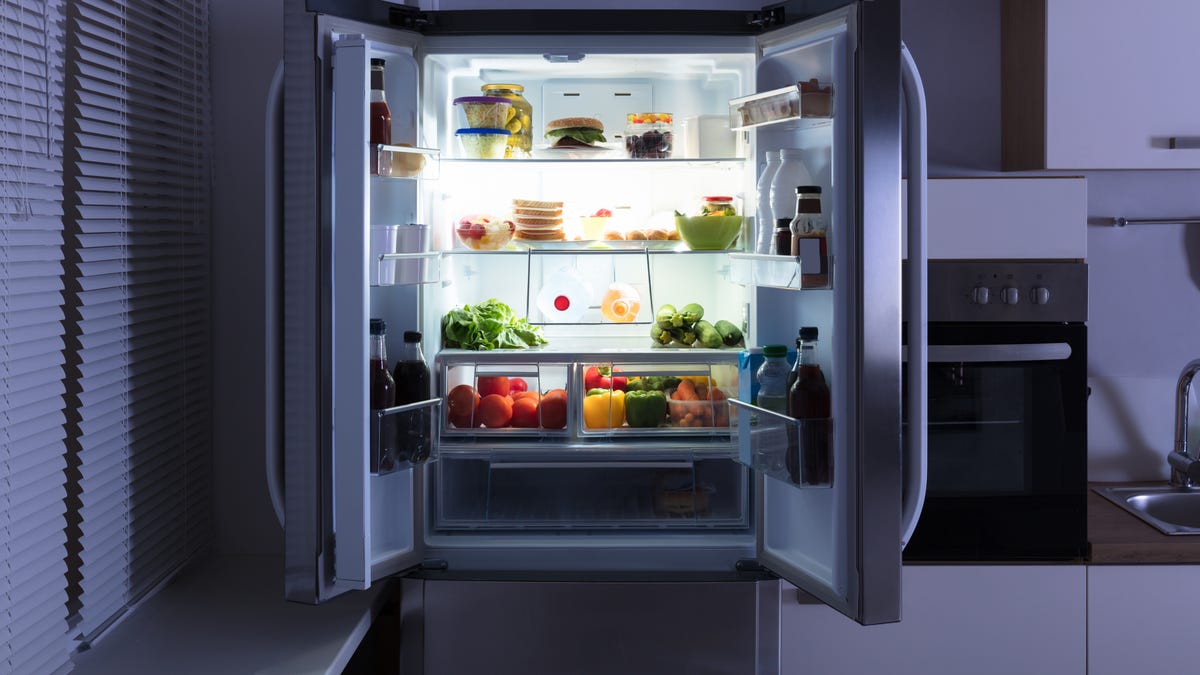

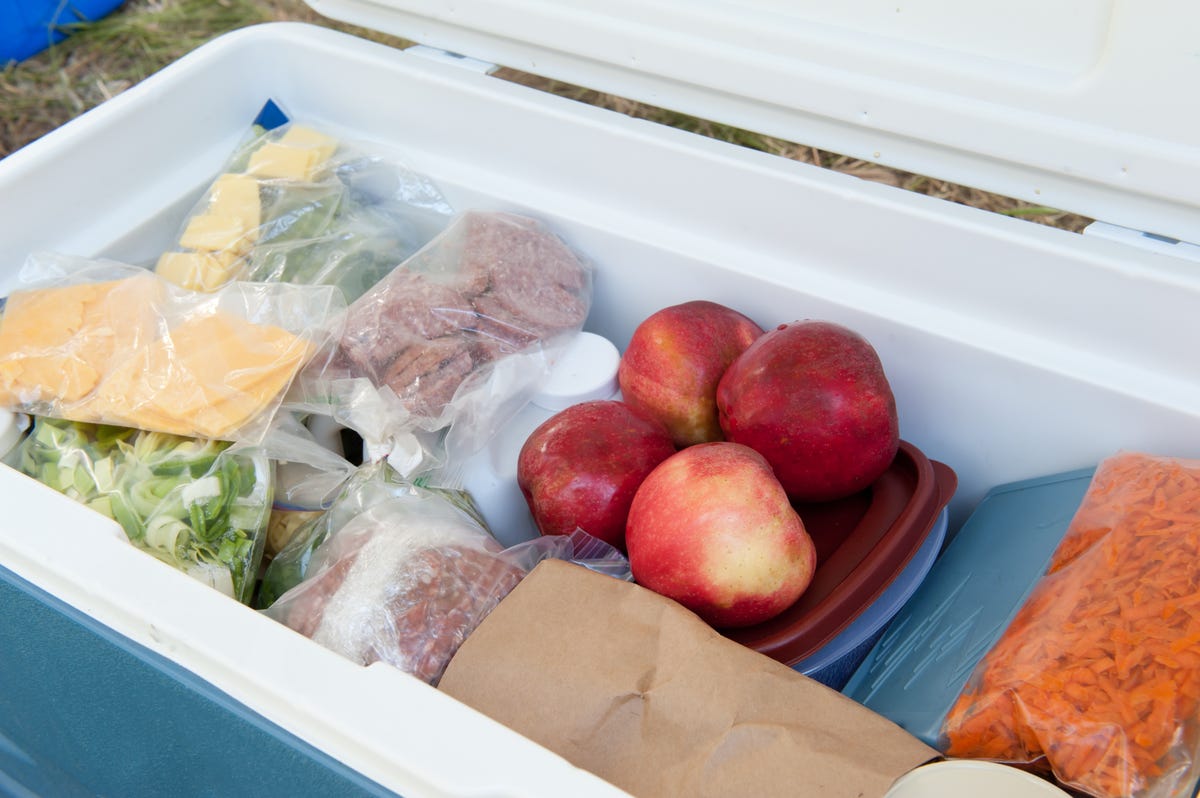


IMAGES
VIDEO
COMMENTS
Short Answer. Motorboating is a silly sound effect created with one's mouth. To motorboat, open your mouth wide, stick out your tongue, and make a motorboat sound with your lips vibrating. It can be made louder and faster by slightly wiggling your head. Motorboating is usually done as a joke or to express excitement.
The term 'motorboat' is something of a catch-all. Since it just refers to any boat with a motor, we need to break the category down a little further. A speedboat is a kind of motorboat specifically designed for - you guessed it - speed. They are as streamlined as possible, with deep v-shaped hulls to powerfully cut through the waves at ...
Minimum Age to Operate a Vessel: No one under 12 may operate a motorboat over 10 hp. 12-15 may operate with an adult on board. Minimum Age to Operate a Personal Watercraft (PWC): No one under 12 may operate a motorboat over 10 hp. 12-15 may operate with an adult on board. Boat Trailer Registration Requirements: Boat trailers must be registered.
The 10 fundamentals of driving a motorboat, speed boat, or pontoon boat are below. 1. Run the Blower. When operating a motorboat, you don't right away sit on the driver's seat and start the engine. This is particularly true if your motorboat has an engine compartment and is powered by gasoline.
Next thing you know, you'll be bandying about terms such as deadrise and vacuum-bagging. Above: Modern motorboats come in all shapes and sizes, and may have several different types of engines. Read on, to find out why this Pursuit OS 385 is not just a powerboat, but is also a deep-V outboard planning walkaround boat —and to learn a whole ...
Draft and bridges. A motorboat's draft is significantly shallower, thanks to the absence of a keel. Furthermore, the lack of a mast means there's no need to worry about the boat's height when it comes to passing under bridges. So from a depth and overhead clearance perspective, you're in safe waters with a motorboat.
Short Answer. To start a motorboat, you'll need to make sure it has fuel and check that all the switches are in the off position. Next, insert the key into the ignition and turn it to the on position. Then, press the start button and the motorboat should begin to run. Finally, adjust the throttle to the desired speed.
Engage the kill switch on manual ignition motors. The kill switch is usually a lanyard with a 2-pronged metal clip on it. Wear one end of the lanyard on your wrist, belt loop, or life jacket. Connect the other end to the kill switch knob, typically located on the front of the motor's outer casing.
Boat training. The first step to enjoying motor boats is taking the necessary boat training that'll teach you everything you need to know about boat handling. The RYA has a number of courses on offer, ranging from complete beginners, all the way through to those looking to test their motor boat skills in more demanding conditions. The RYA's ...
A motorboat is a small craft with one or more engines for propulsion. Motorboats are commonly used for work, recreation, sport, or racing . Boat engines vary in shape, size, and type. These include inboard, outboard (integrating, the engine, gearbox, and propeller in one portable unit mounted in the rear), and inboard-outboard (or "sterndrive ...
Both boats should veer right. Ryan Swanson. There is no right of way on the water. Every boater is obligated to do what is required to avoid collision. In any meeting of boats, one is deemed the stand-on vessel and the other the give-way vessel. The rules of the road explain the situation more completely and can be learned in a boating safety ...
A quick look at the new motorboat update including the bassboats and zodiaks. Hope you all are doing well!My Favorite Budget Fishing Gear!!Plastic: https://...
Ages 12 - 17 to operate a motorboat over 25 hp. Mississippi: Persons born after June 30, 1980. Missouri: Any person born after January 1, 1984. Montana: Youth 13 and 14 years of age must either complete a boating education course or be accompanied by an adult in order to operate a motorboat or PWC with a motor greater than 10 horsepower. Nebraska
motorboat, a relatively small watercraft propelled by an internal-combustion or electric engine. Motorboats range in size from miniature craft designed to carry one person to seagoing vessels of 100 feet (30 m) or more. Most motorboats, however, have space for six passengers or fewer. Motorboats are used recreationally for traveling on water ...
When your engine runs over the max-rpm range, back off the throttle, reduce speed until the rpm gauge drops to the suggested rpm range recommended by the manufacturer. When you return to shore, check the pitch of the props. You should have a drop of 200-rpm for each degree of increase in the pitch.
In this video I'll show you how to build, drive and build on the brand new motorboat that just became available in patch 258 of ARK: Survival Evolved. The mo...
Mooring a boat is usually straightforward, but there are rules you'll need to remember. Our handy video makes it easy to know where, when and how to moor. ...
Pump each head until you are sure the antifreeze has run through it and all of its lines, all the way to the holding tank. If you have a LectraSan or other waste treatment device, there may be some special steps you need to take. In this case, winterize it according to the manufacturer's recommendations.
Cabin Cruiser: Generally, any larger motorboat that provides sleeping accommodations within its structure. This generic term can be used to describe motoryachts, expresses, and a number of different designs. Center Console: A powerboat with its console and helm located in a central location on deck.
Let's say you have a boat weighing 5,000 pounds (2,268 kg) with an engine of 300 HP. The calculation will look like: 5,000 pounds / 300 HP = 16.6 pounds (7.5 kg) per horsepower. 300 HP / 5,000 pounds = 0.06 HP per 1 pound (0.45 kg) You should do the math to match the desired outboard engine with your boat size correctly.
Trimming Down = Bow Down. By trimming down, we tilt the forward top of the engine back, until it is parallel with the transom (or zero trim). This pushes the propeller towards the boat, pushing the water straight back away from the vessel and leveling out the boat's hull. If you're trimmed up to begin, when you trim down, the bow will lower.
What should you do if you are operating a motorboat that is being overtaken by a sailboat. Ahoy, sailor! If you find yourself in the exhilarating position of being overtaken by a sailboat while operating your motorboat, hold steady and maintain your course and speed. As the motorboat operator, you have the right of way and are considered the ...
You then let the motor run on idle for roughly 10-15 minutes before shutting it down and completing a normal oil change. The flush works with the old oil to clean out the motor and remove the ...
Once you've passed the four-hour mark (or if you see the temperature inside the fridge has risen to over 40 degrees F) and the power is still out, it's time to start moving food out of the fridge.
Under Section 605 of the New York State Vehicle and Traffic Law, you must file an crash report in some situations. If you are a driver involved in a crash in which a person is injured or killed, or there is damage to the property of one individual (including yourself) in excess of more than $1,000, you must file your own crash report within 10 days from the date of the crash.
The Wisconsin Department of Transportation (WisDOT) Division of Motor Vehicles (DMV) will transition to the American Association of Motor Vehicles Administrators (AAMVA) Modernized Testing System (2022) beginning November 4, 2024. Wisconsin's CDL examiners will follow the new guidelines for testing Vehicle Inspections (VI) and Basic Control ...
Build your own outboard boat motor stand quickly and easily with this instructional video - including a materials list, tools list and step-by-step assembly ...
In general, most modern cars, trucks, and SUVs use multi-grade motor oil. You'll see this written as something like 0W-20 or 5W-30. There are single-grade oils, such as 10W or 20W, but it's rare ...
Office of Motor Vehicle P O Box 3153, Little Rock, AR 72203-3153 In Person: You may go to any State Revenue Office. Vehicle Assessment Before renewing your license you are required by Arkansas law to assess your vehicle with your county assessor and pay all personal property taxes you owe.
One man has died and six people are missing after a luxury yacht sank in freak weather conditions off the coast of Sicily. The 56m British-flagged Bayesian was carrying 22 people - 12 passengers ...